Puglia and a bit of Rome. Part 6. Lecce

To be continued. Start here >>>
On this day we had a transfer from Bari to the "heel of the Italian boot", in Lecce, where we booked a room for three nights.
I'll say right away that Lecce is one of my favorite cities. It all started after watching the wonderful film by Ferzan Ozpetek “Idle Shots”, or “Wandering Mines” (Italian Mine vaganti), where the action takes place in Lecce. And everything is so beautifully filmed against the backdrop of a beautiful city that the director was awarded the title of "Honorary Citizen of Lecce". After the film, we immediately got the idea to visit the city without fail. Two years ago, during a tour with a group in southern Italy, we stopped by the city for half a day, but this, of course, is not enough for Lecce.
It took an hour and forty minutes to get to Lecce by train, the cost was about 10 euros.
We lived there in the very center of the city,
but housing was chosen closer to the station, because then we had an early morning move to Rome, and extra distances with suitcases were useless. We settled in an old three-story house, on the ground floor there was a living room, a kitchen and a room for the owners, who came late at night. We had a room on the second floor and our own huge bathroom with a jacuzzi, on the third floor there was also a room, but with a regular bath. When booking, it was taken into account that guests do not cook in the kitchen and do not eat in the living room, all guests were given cards in a cafe on the square, where you can get coffee and some sweet bun to choose from. True, we clarified with the owners that we could make our own coffee in the kitchen, but we had to eat in our room.
According to mythology, the city on the site of today's Lecce stood before the Trojan War and was called Sibar. In the 3rd century BC conquered by Rome. Already in the time of Nero, the first Christians appeared here.
Patrician Publius Orontius, according to legend, converted to the Christian faith by one of the disciples of St. Paul, became the first bishop of Lecce, and after his martyrdom was canonized. He is now the patron saint of Lecce.
Lecce is also called the "Capital of the Southern Baroque", the "South Florence", and the "Golden City". As for the comparison with Florence, I do not agree at all, the streets there are rather dull for me, but the "Golden City" is closer to the truth. The golden-honey color of the houses owes its color to the famous "pietra di Lecce" (a special type of limestone, light and malleable in processing, having a golden hue), from which the ancient city is built. However, the "Leccian Baroque" (barocco leccese) adorned the buildings with countless and unparalleled reliefs and sculptures of great expressiveness.
In the Middle Ages, the city was surrounded by a fortress wall,
now only fragments and three gates remain of it. We entered the last trip through the Neapolitan Gate (Porta Napoli), built in the form of a triumphal arch in 1548 in honor of the arrival of the King of Spain - Charles V, to commemorate the completion of the work that he undertook to strengthen the city from the Ottoman Turks.
Slightly from the gate there is an obelisk erected in 1822 in honor of Ferdinand of Bourbon, the king of the Two Sicilies (both, because the Kingdom of Sicily used to also own the lands of Southern Italy, then there was a partition).
Behind the gate is a church of an unusual round shape - Chiesa di Santa Maria Porta:
The Chiesa di S. Maria Della Provvidenza church, built in 1724, with a strict facade, is also not like other churches in the city. Architect Giuseppe Chincio.
en/newimg/3/1200x800/00/02/63/89/2638991.jpg" target="_blank" rel="nofollow">
The center of Lecce is Piazza Sant'Oronzo. Most of it is occupied by a Roman amphitheater of the 1st-2nd centuries excavated by one third. It was discovered by accident at the beginning of the 20th century during the construction of the Bank of Italy building. They write that the amphitheater was designed for 25.000 people, and its size indicates that Lecce was a very large city in those ancient times.
In the square stands a column with a statue of St. Orontius in episcopal robes, stretching out his hands in a gesture of blessing over the city, the ancient column is a gift from the inhabitants of Brindis, and the sculpture was made in Venice in 1739.
Behind the amphitheater is a building with clear geometric shapes. This is the Sedile Palace (Palazzo del Seggio), built at the end of the 16th century by order of the mayor of Venice in the Gothic Revival style.
Now exhibitions are held here and a tourist information center is located. Adjacent to the palace is the old Venetian church of San Marco.
The facade of the Church of Santa Maria delle Grazie - Our Lady of Mercy (16th century) overlooks Piazza Sant'Oronzo.
There is also a cafe where we had breakfast:
There is another ancient monument in Lecce - this is the ancient Roman theater, it was built in the 1st century AD and accommodated about 5.000 spectators.
Near Piazza Sant'Oronzo stands Castello di Lecce. The fortress was built under the Normans in the 12th century and completely rebuilt by the Spaniards in 1549 at the behest of Charles V, who were afraid of the attacks of the Ottoman Turks.
The fortress has the shape of a quadrangle with bastions at the corners.
Duomo Square is a beautiful architectural ensemble, closed on three sides by buildings. It was founded in the 18th century. The courtyard is closed on three sides by buildings.
The Cathedral of Santa Maria Assunta was built in 1144. In 1659 it was again reconstructed in the Baroque style. The architect Giuseppe Zimbalo (sometimes written as Zimbalo) decided not to change the architectural plan of the cathedral, and therefore, after the reconstruction, the cathedral appeared in a new form - in the Lechisian Baroque style, which adjoins the bell tower, also made by Zimbalo.
It is 72 meters high and has an iron statue of St. Oronzo at the top:
The cathedral has two entrances. The main one stands in front of the bishop's palace, and the second one is on the left side, at the entrance to the square. Inside there are 3 halls,
separated by half columns.
The central hall is crowned with a wooden ceiling, which shows the work of Giuseppe di Brindisi. The baroque interior retains valuable finishing layers, marble floors.
The cathedral has 12 altars - six in each nave, which are dedicated to different Catholic saints, and many paintings of great artistic value.
The entrance door is interesting, if you look from the inside, then glass in the form of the sun and moon, next to Christ, the inserts are illuminated by the sun.
The Bishop's Palace of the 15th century, on the facade of which you can see the oldest (1764) working clock in Lecce.
Next to the 18th century seminary palace:
There are many beautiful churches in Lecce, but the entrance to some is paid. Moreover, if two years ago we visited the cathedral completely freely, now we have to buy a ticket, which is quite expensive (5 euros), or take a complex ticket for 10 euros to several churches.
If you leave Duomo Square and go along the main street of the Old Town along via Vittorio Emmanuele II, you will see the Church of Saint Irene. . .
. . . the city's first patroness.
Building at the turn of the 16th-17th centuries. Francesco Grimaldi, architect of Sant'Andrea della Vale in Rome, repeated many of the motives in this church.
One of the best church facades I've ever seen is near Basilica Santa Croce. . .
. . . this is the pinnacle of Lecce's baroque, a building of amazing beauty and splendor of decor. In the 16th-17th centuries, its construction and decoration was started by Francesco Antonio Zimbalo, and completed by his grandson Giuseppe Zimbalo. The basilica has a magnificent faç ade with many sculptures and decorative elements created by the greatest architects Riccardi, Penna and Zimbalo in turn with the best masons and carvers.
The facade was restored for a long time, on our first visit it was covered with a canvas with a picture.
The rose window was designed by Cesare Penna and designed by Giuseppe Zimbalo.
The altar dedicated to St. Francis of Paola. The altarpiece by Francesco Zimbalo is decorated with twelve bas-reliefs depicting scenes from the life of the saint.
The ceiling of the cathedral:
Palace Celestine (Palazzo dei Celestini), 16th century, a luxurious baroque monastery building adjoins the cathedral and forms a single architectural ensemble with it.
Magnificent courtyard:
The monastery was closed in 1807 and now the prefecture of Lecce is located here:
Via dei Perroni, going a little to the left, leads to the second gate of the Old Town of Porta San Biagio.
They were built in the Baroque style in 1774 over the earlier Charles V Gate.
This is the end of the story about Lecce, in the following reviews I will return to Lecce.
Continued by here >>>
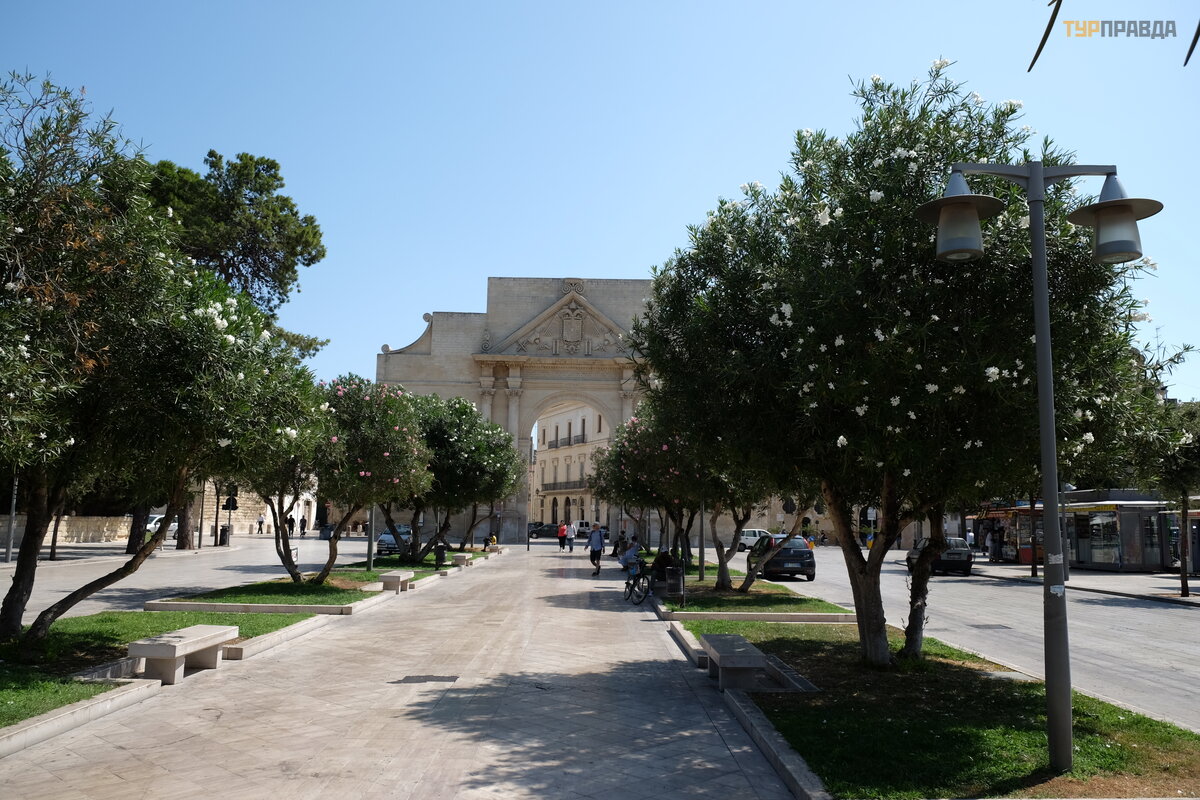
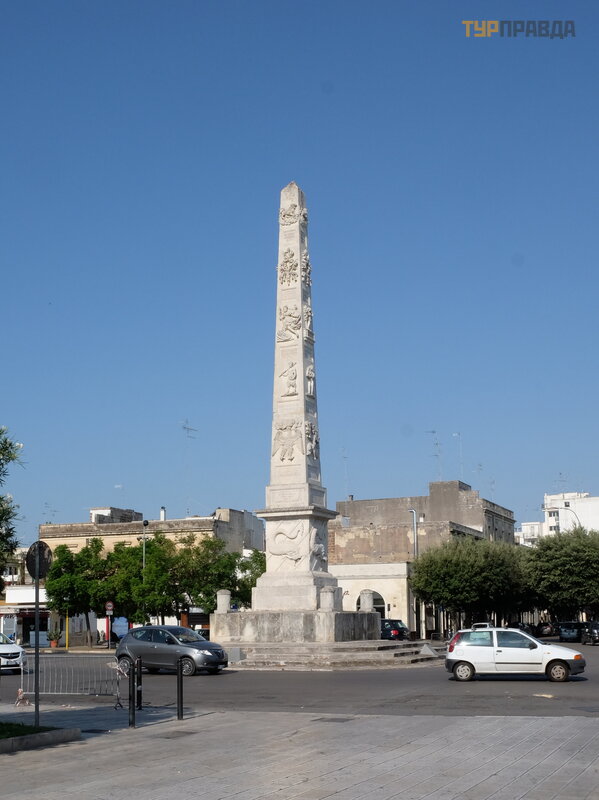
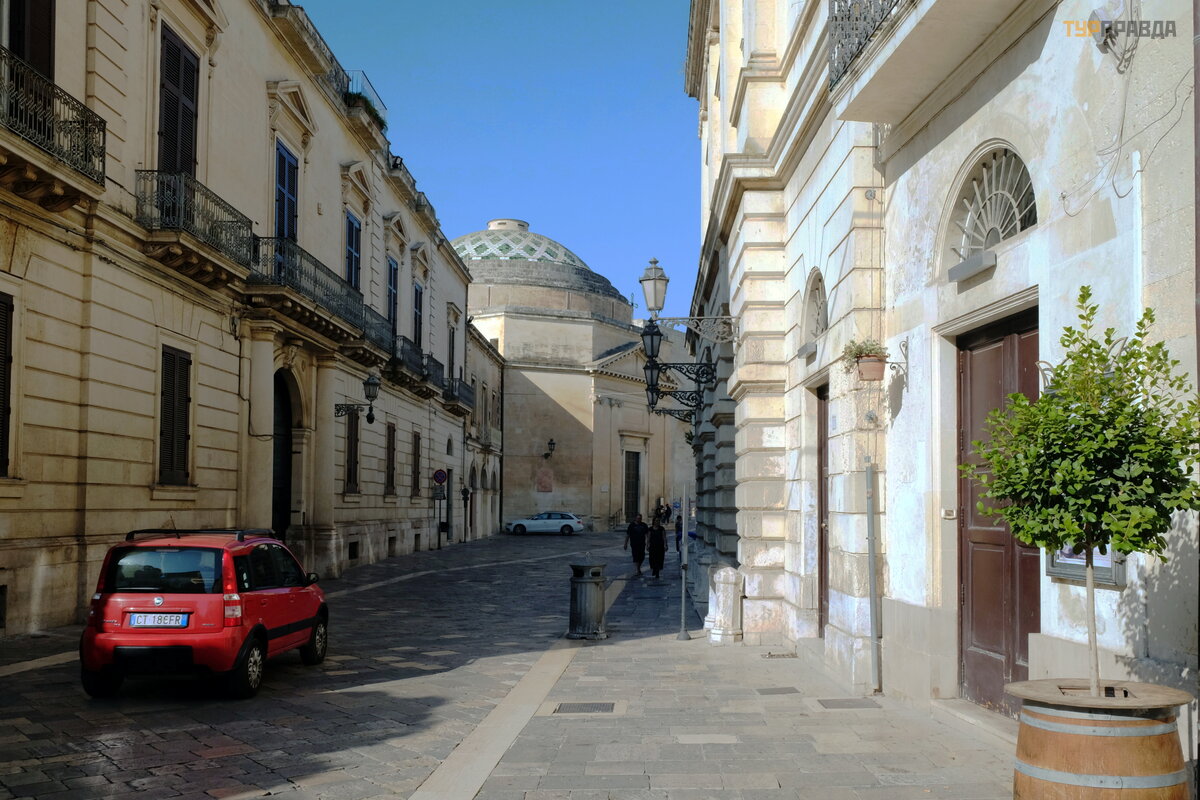
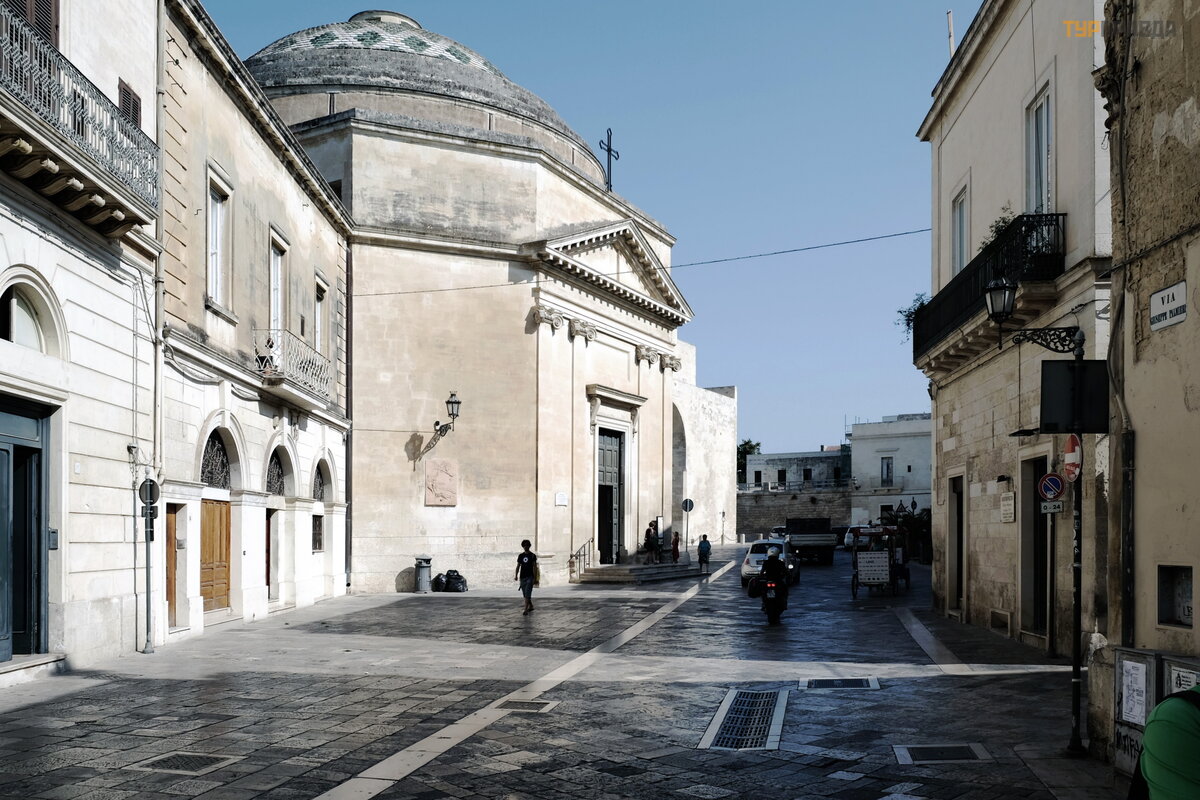

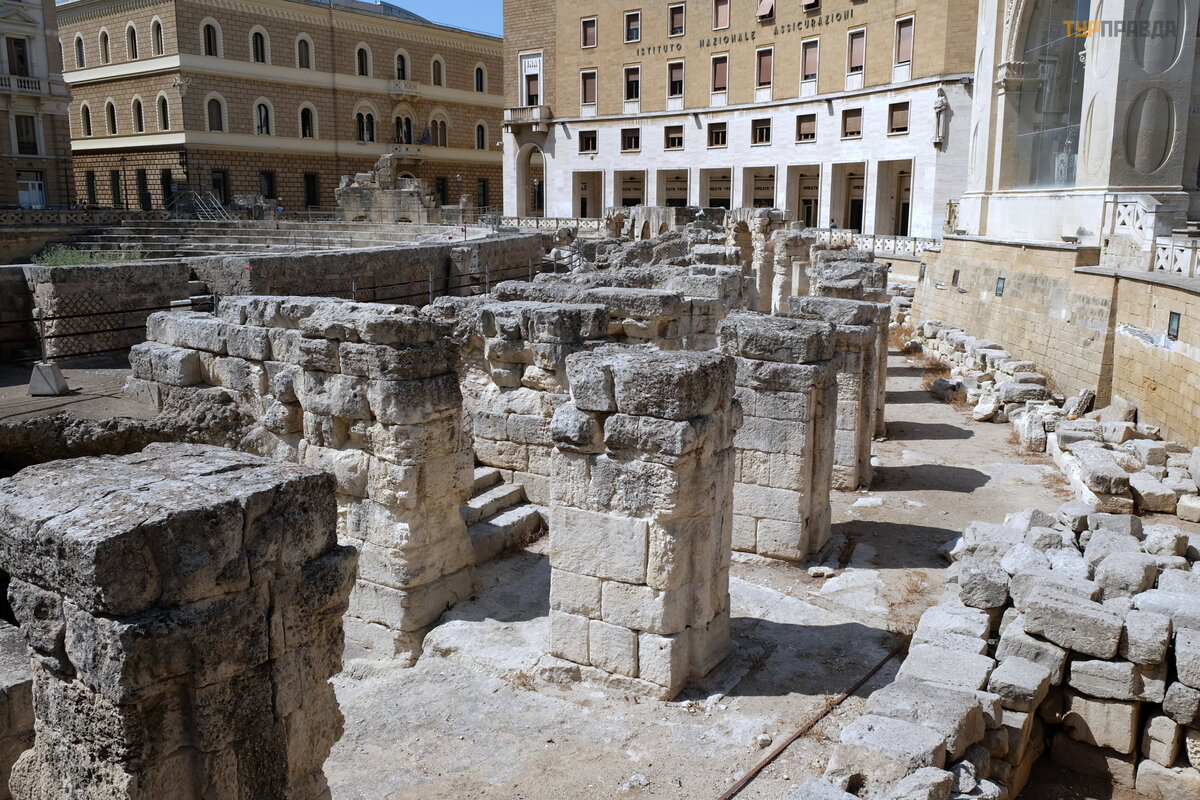
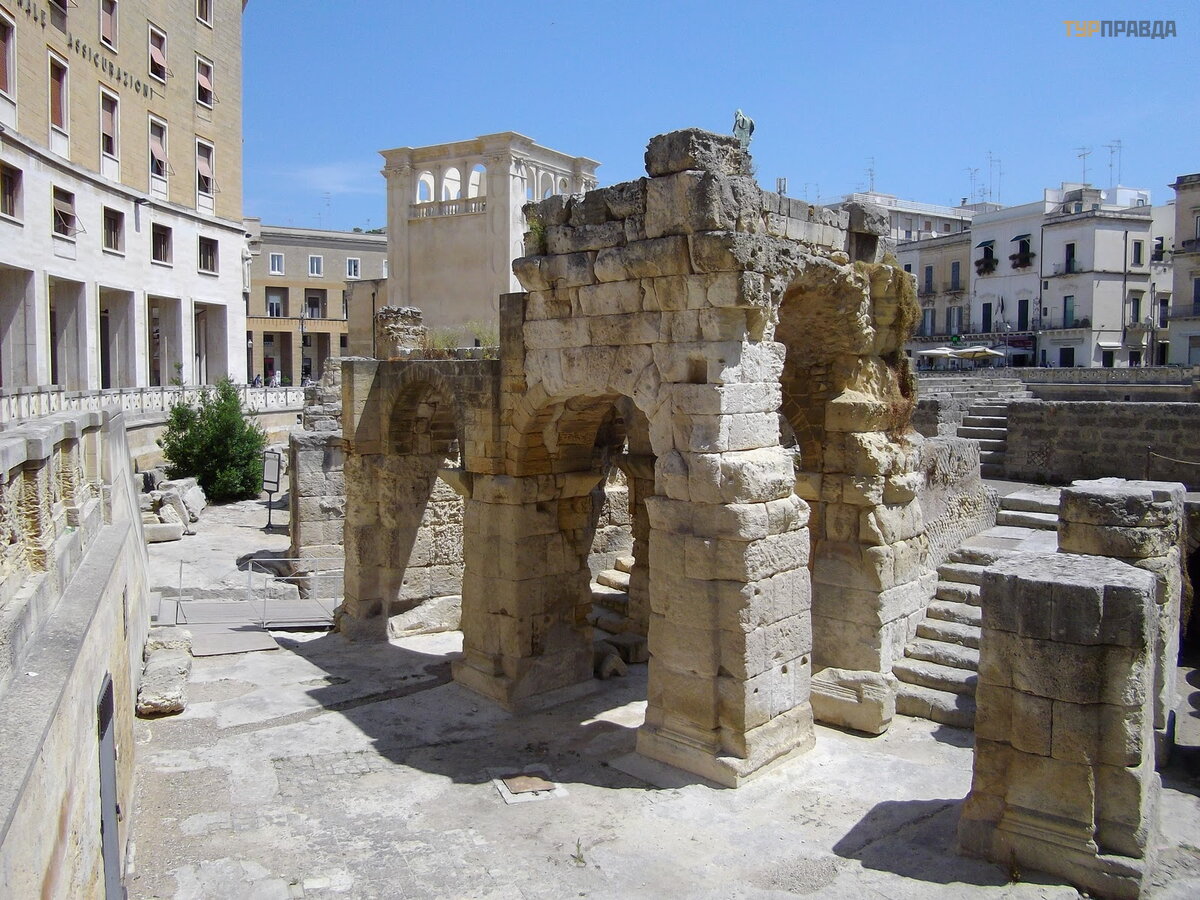
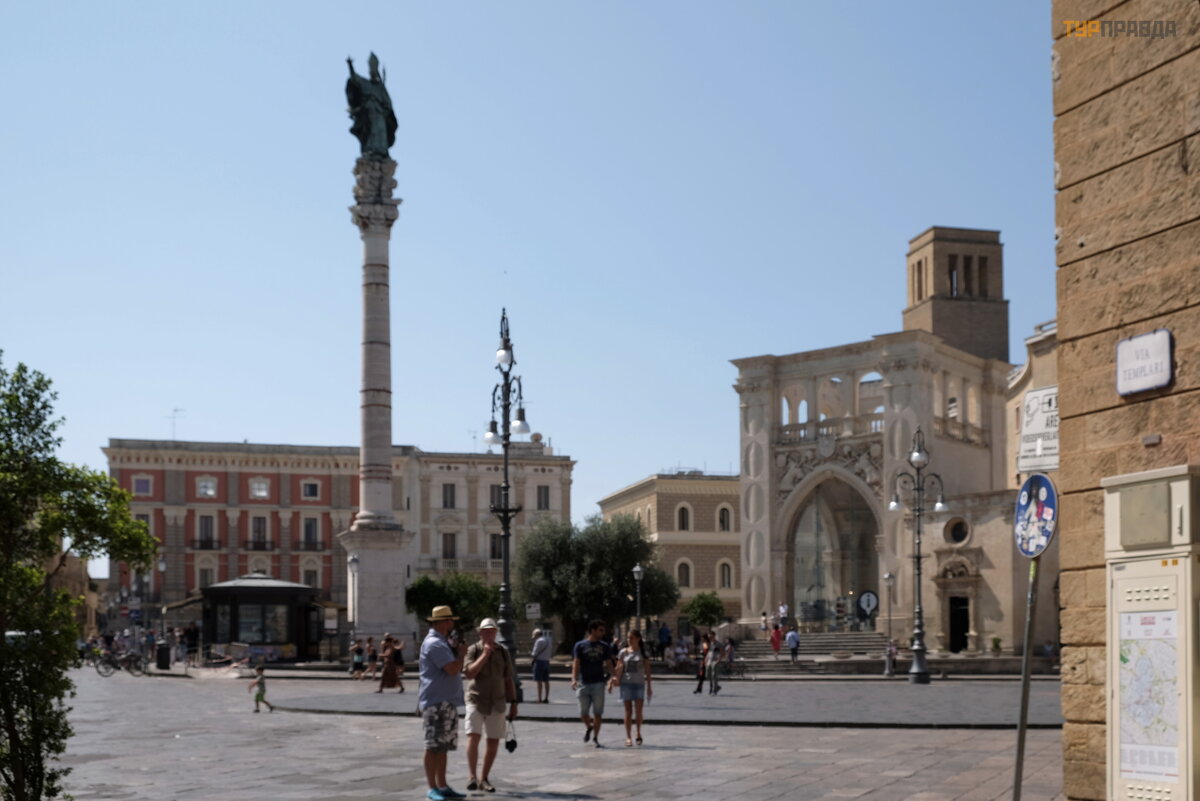
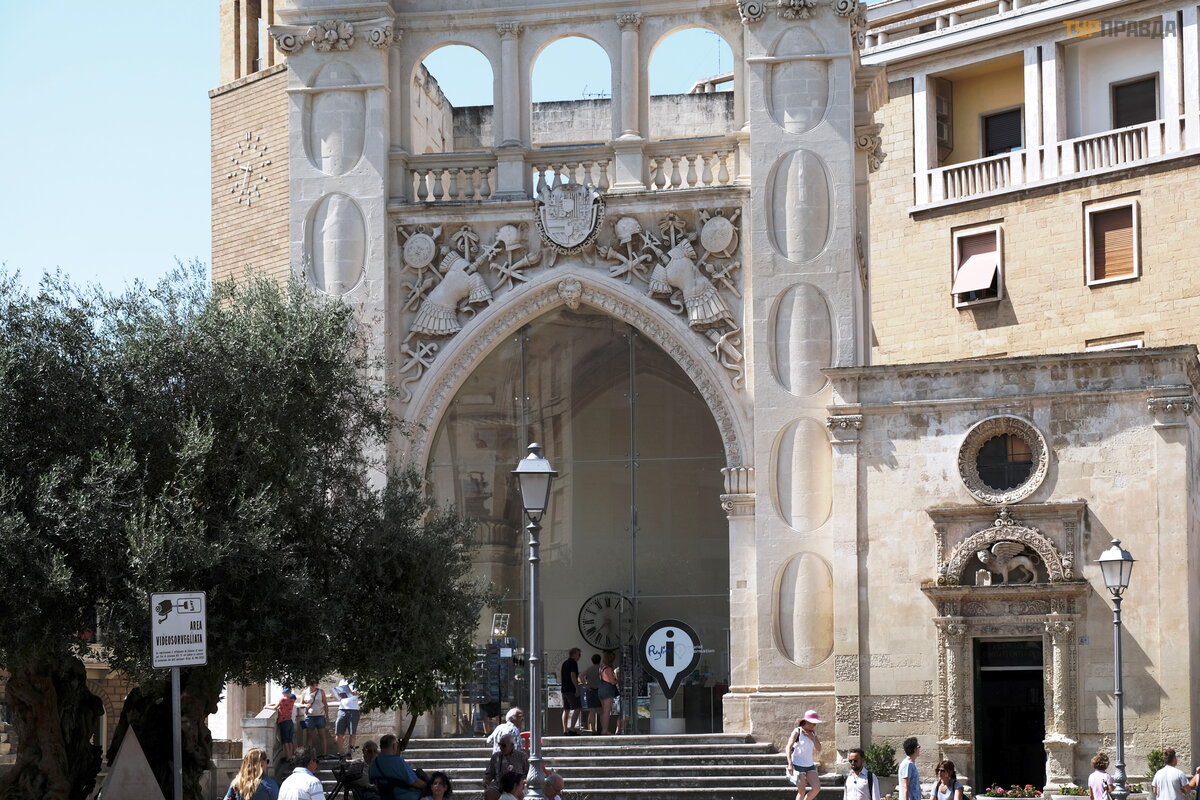
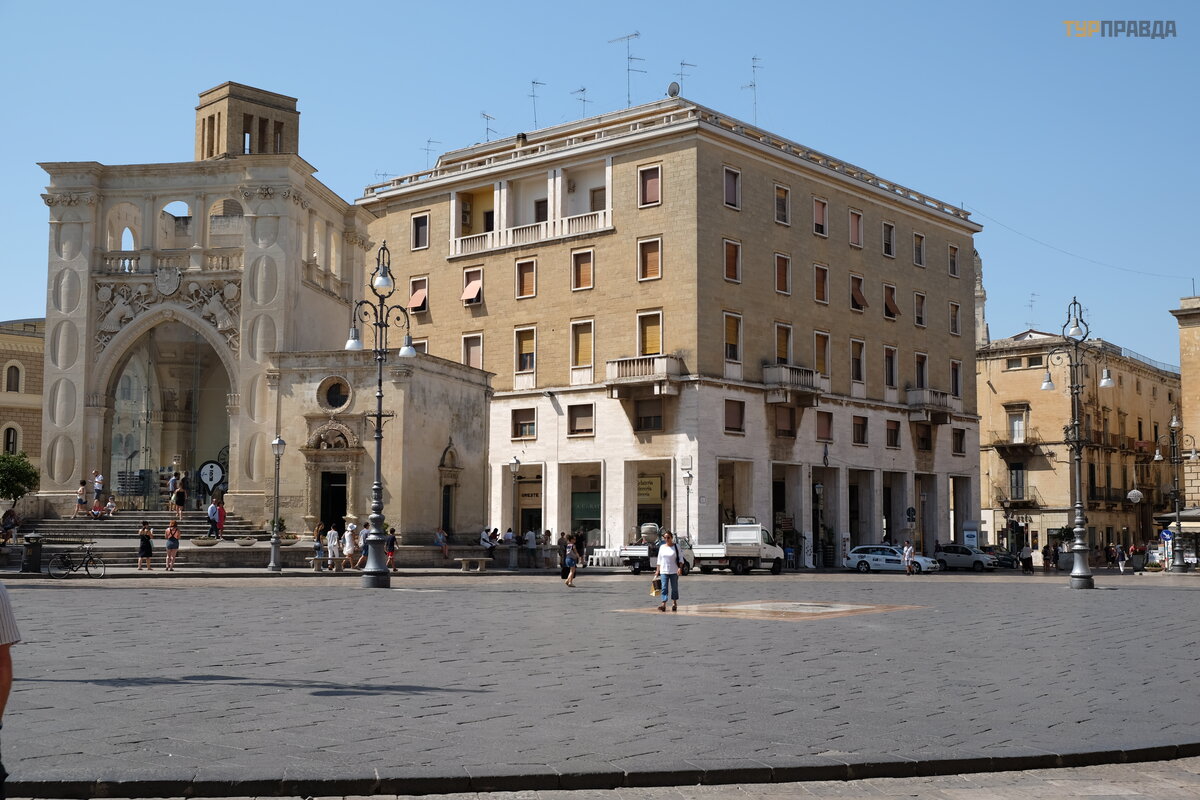
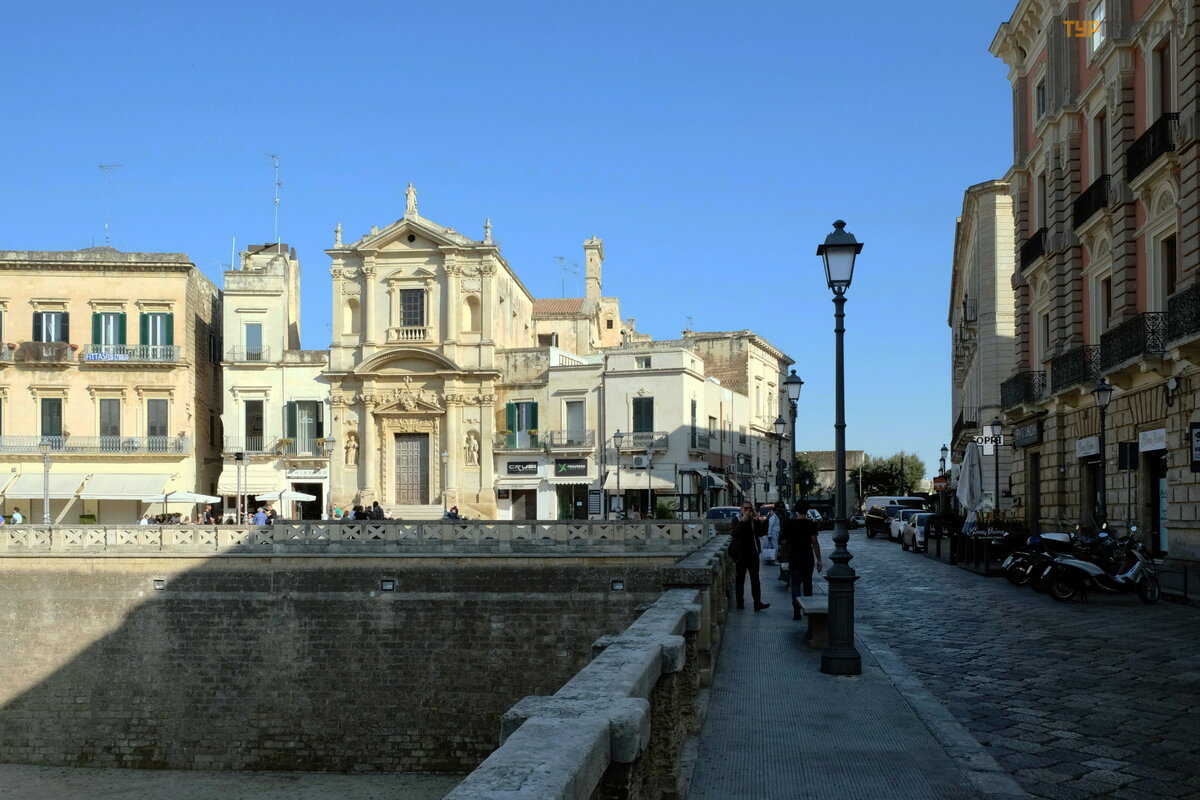
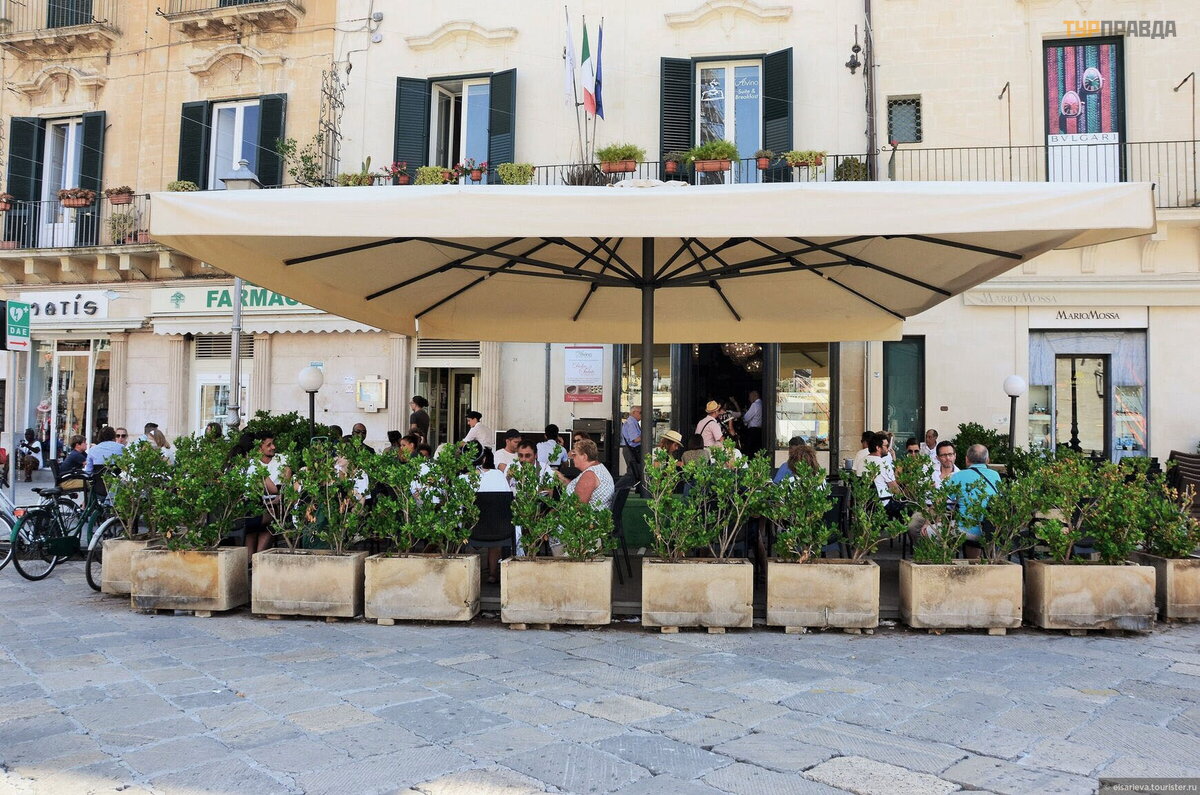
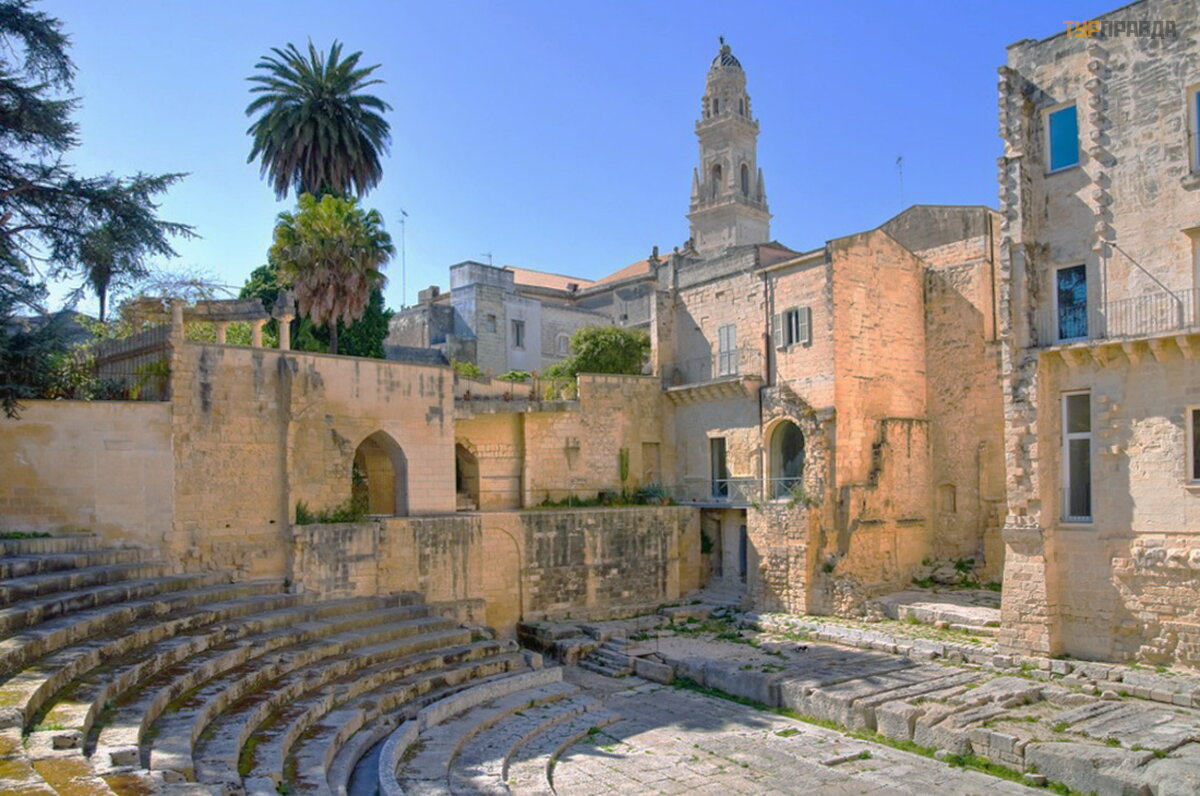
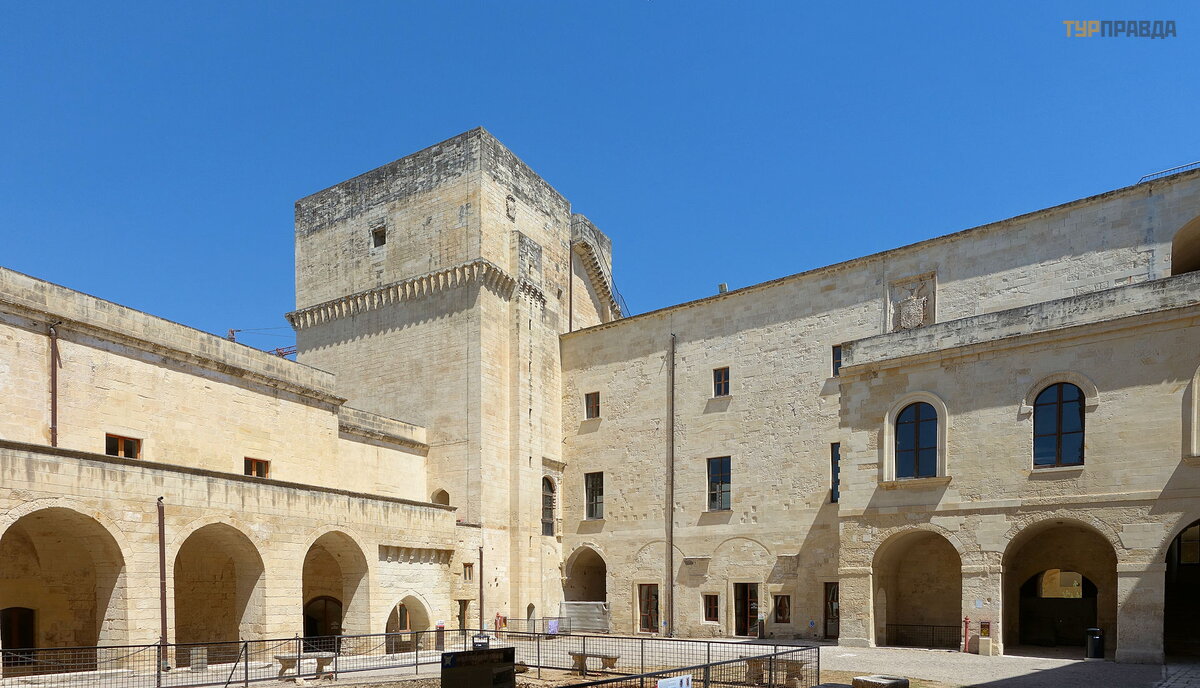
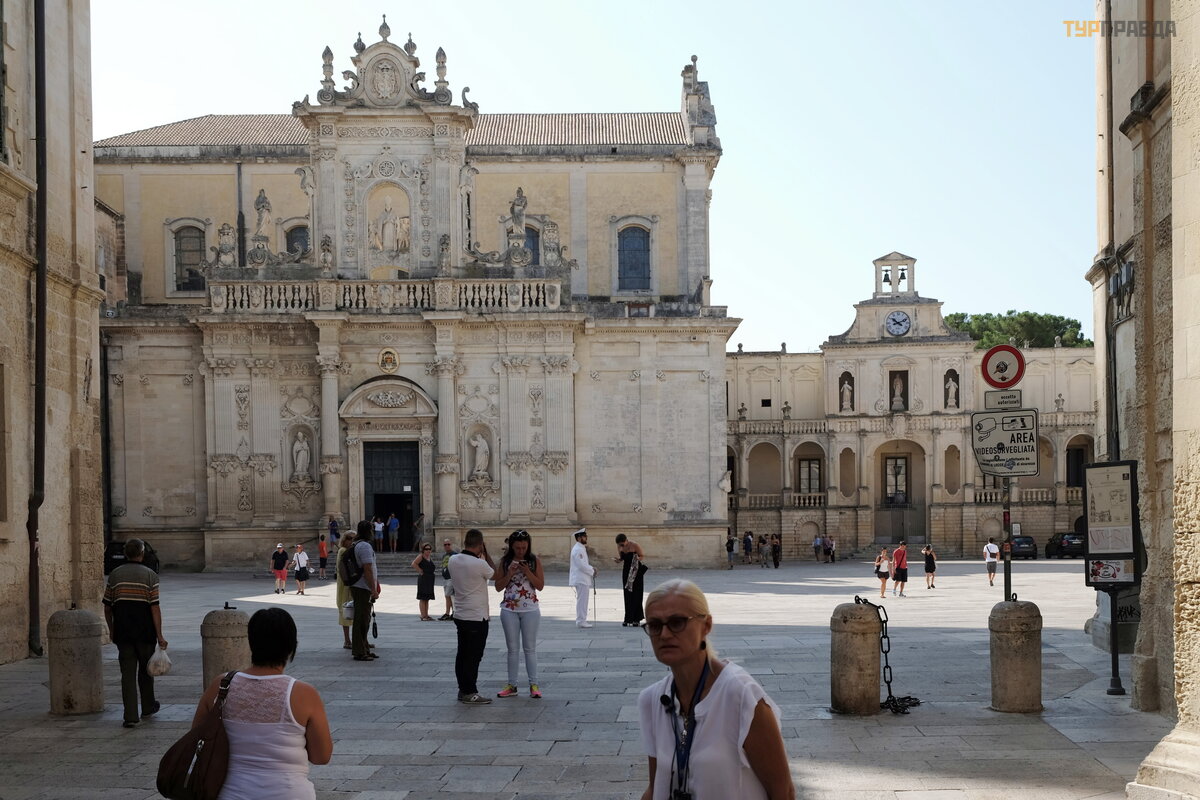
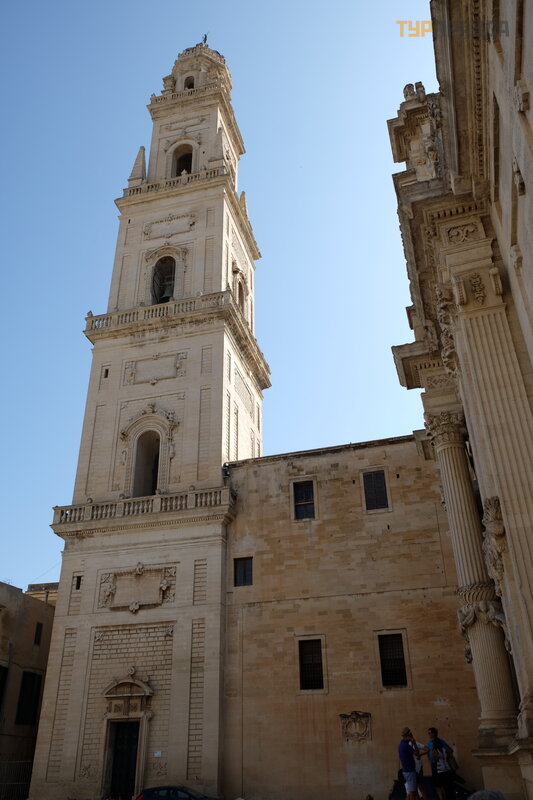
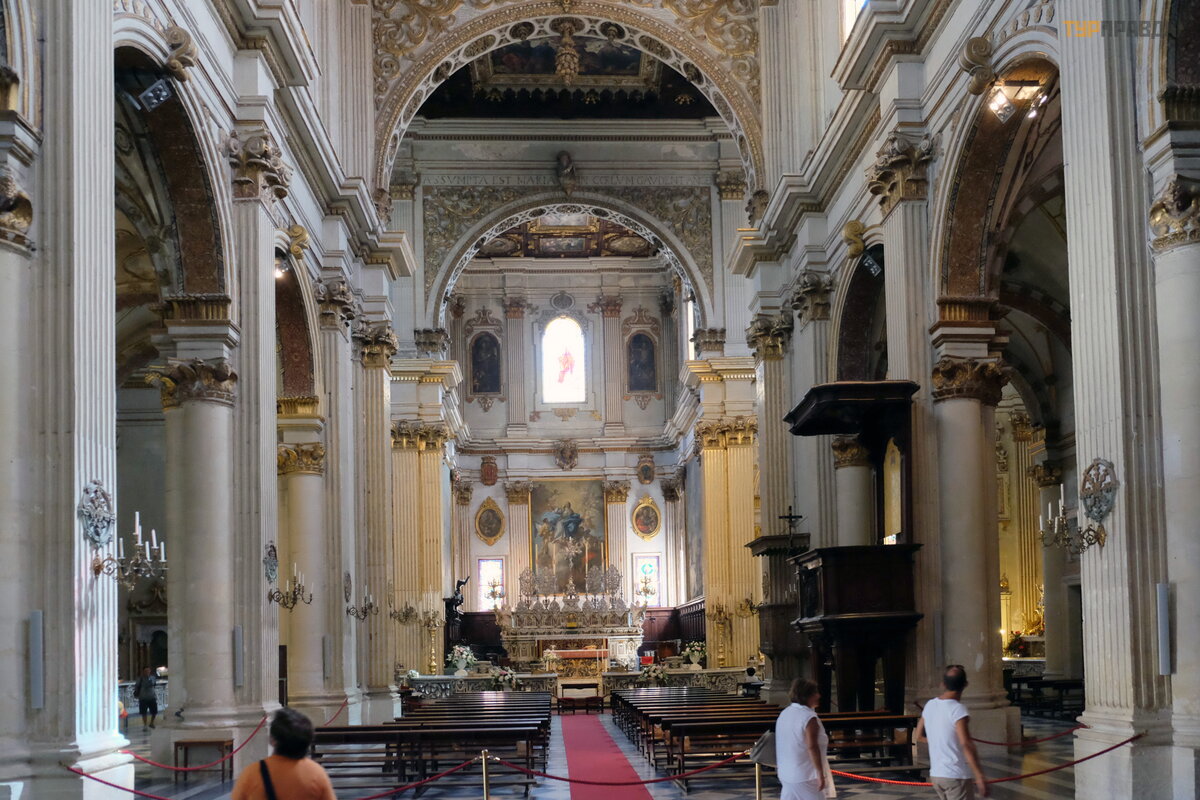
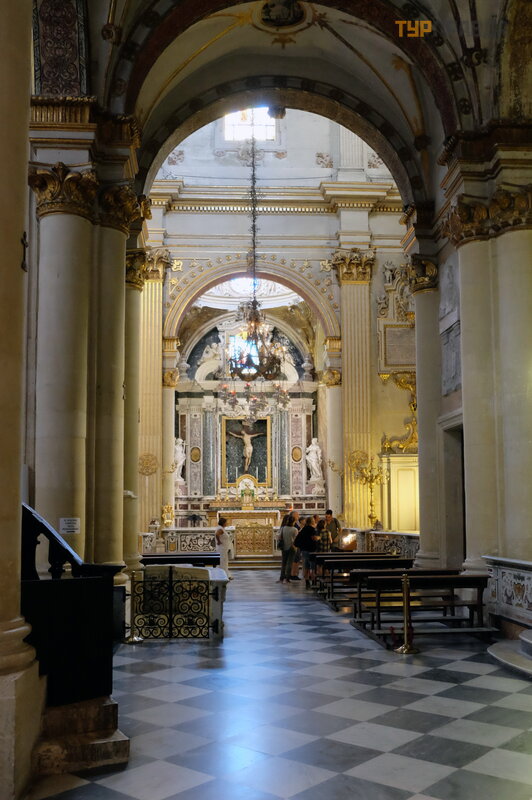
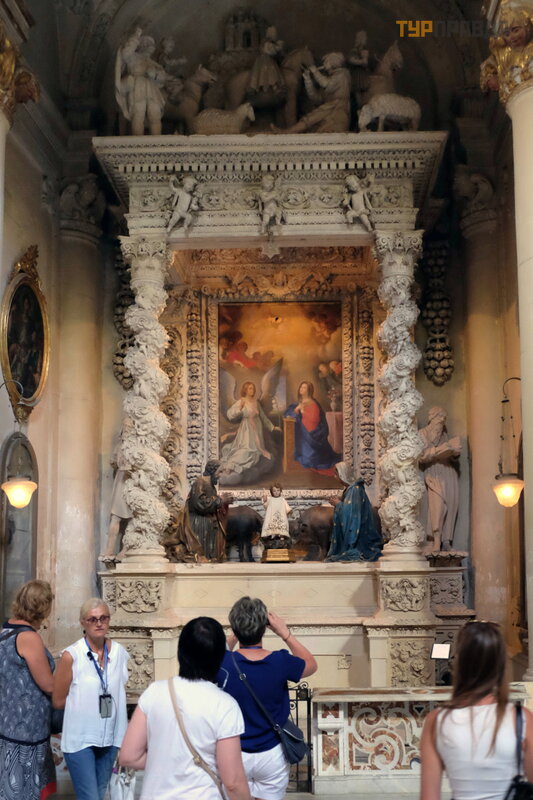

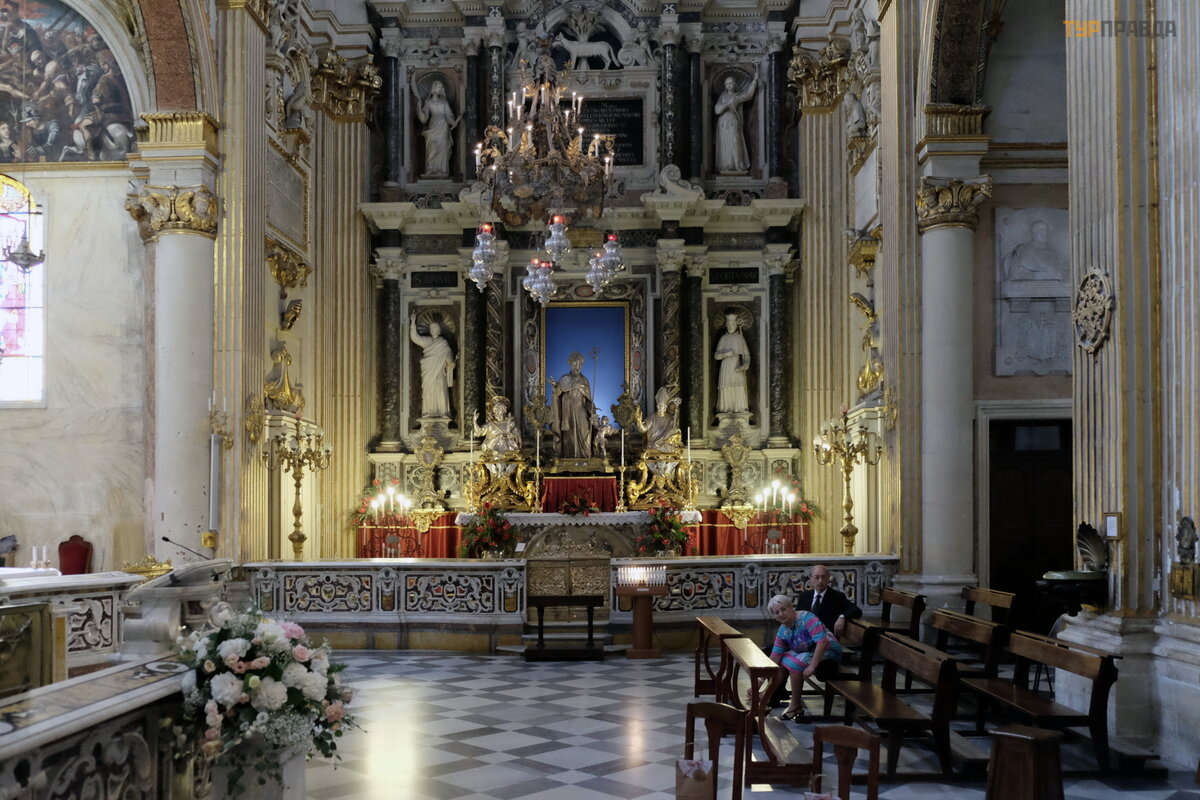
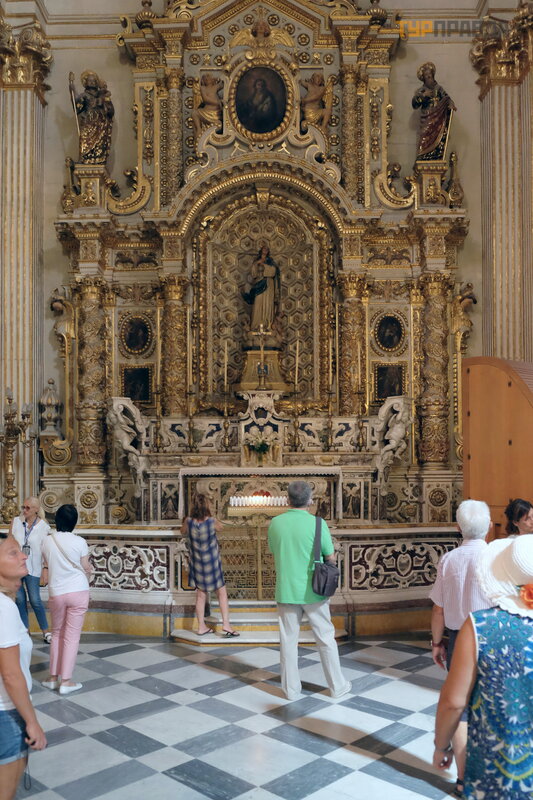
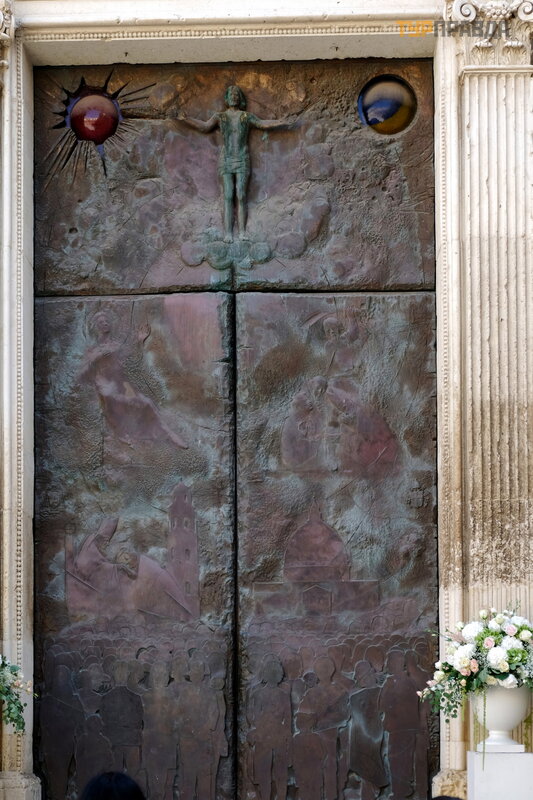
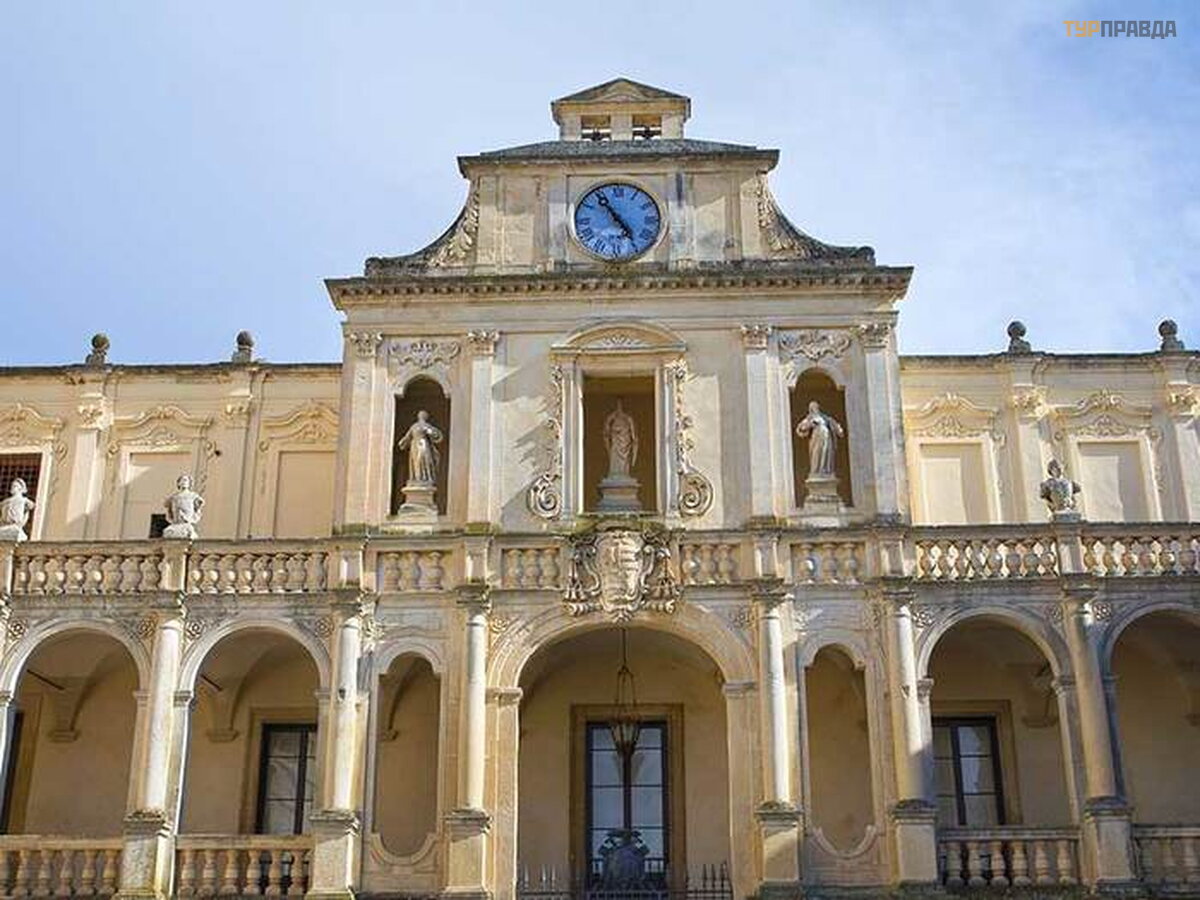
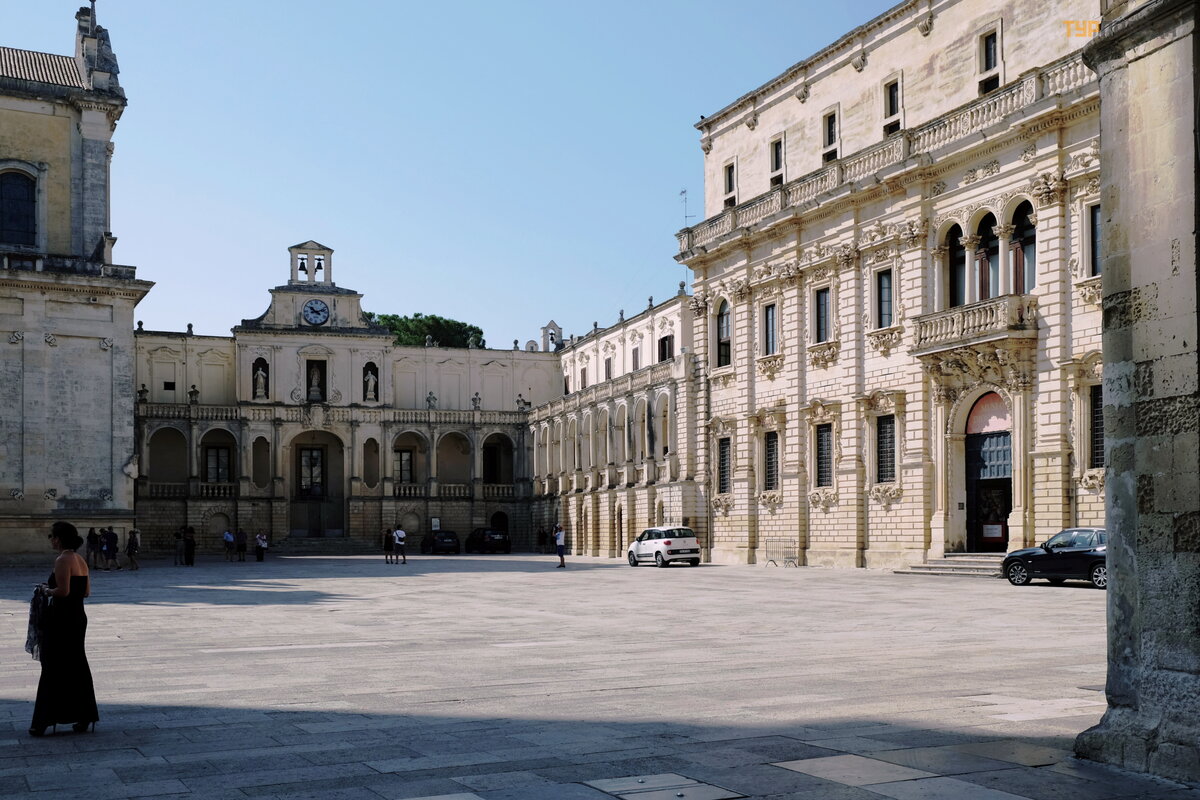
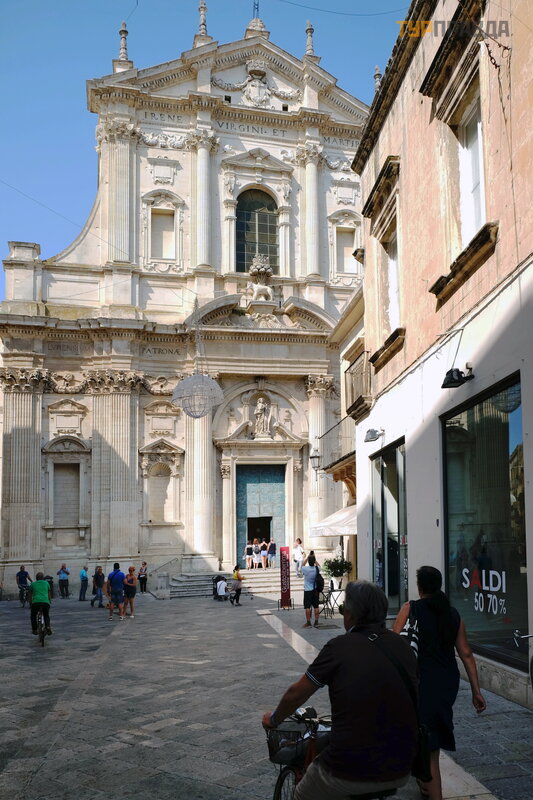
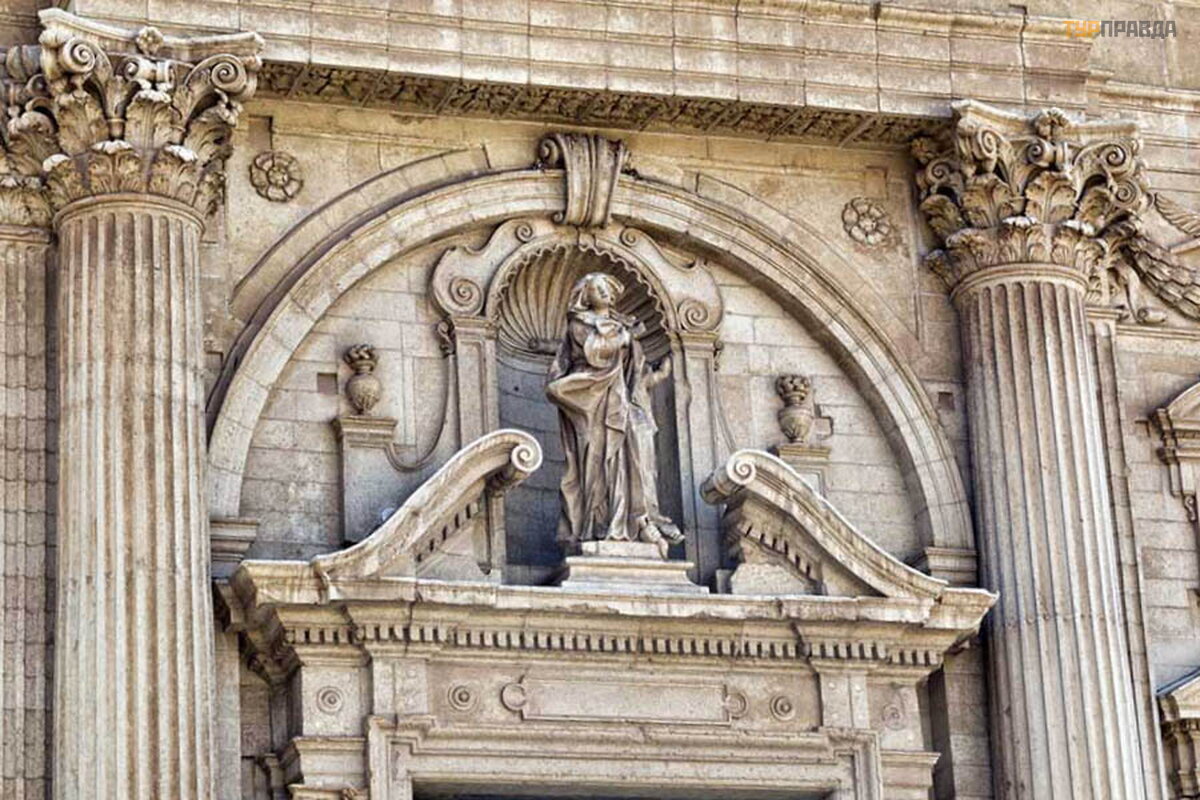
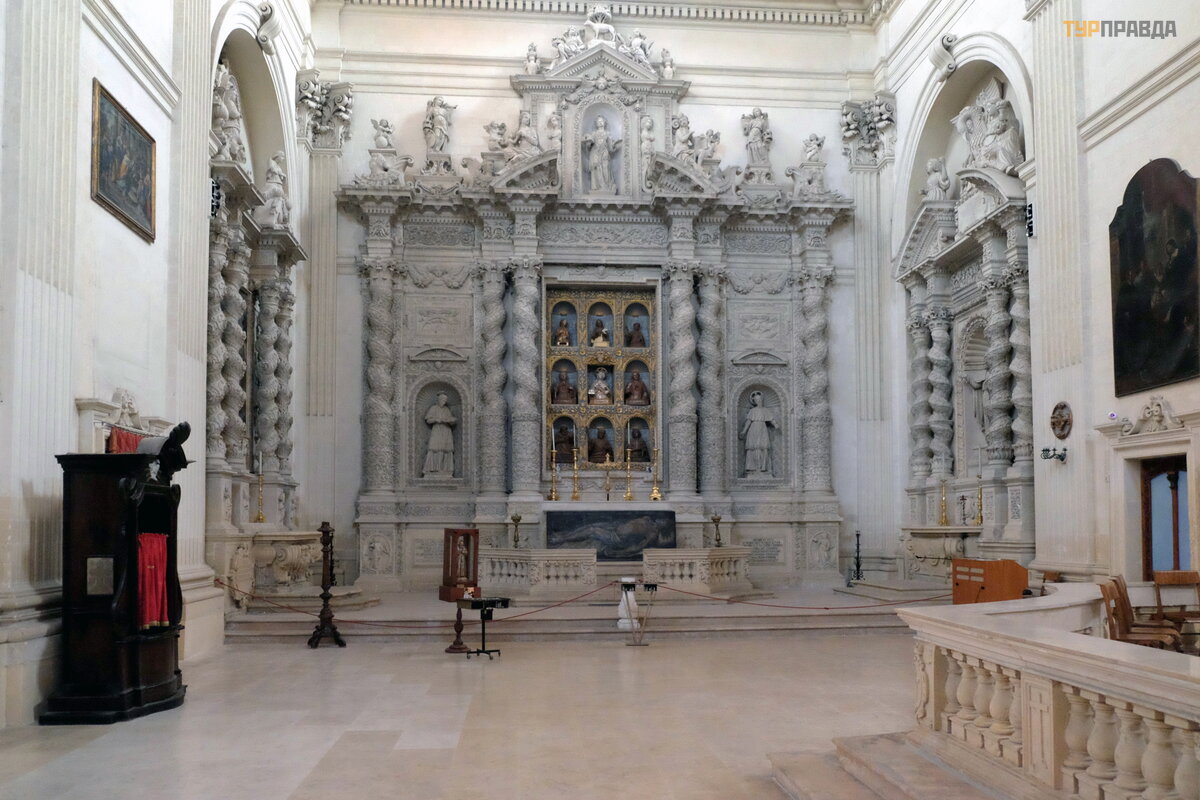
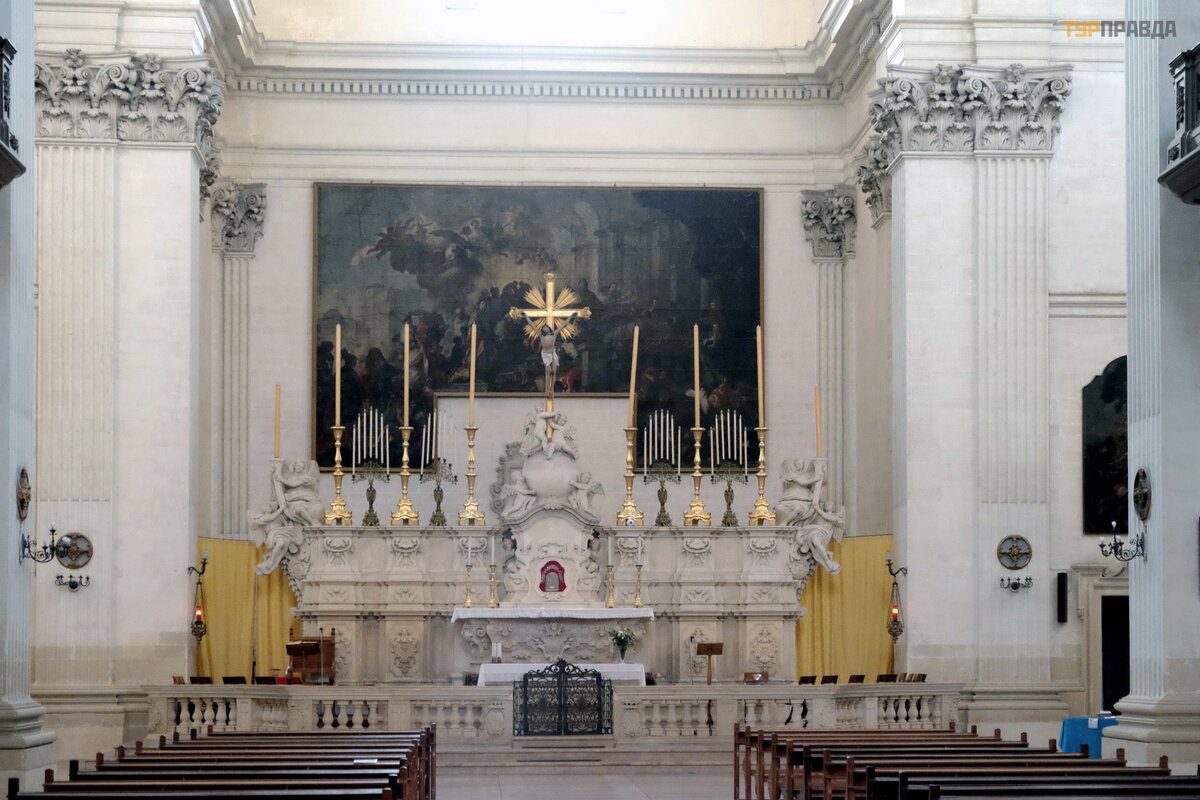
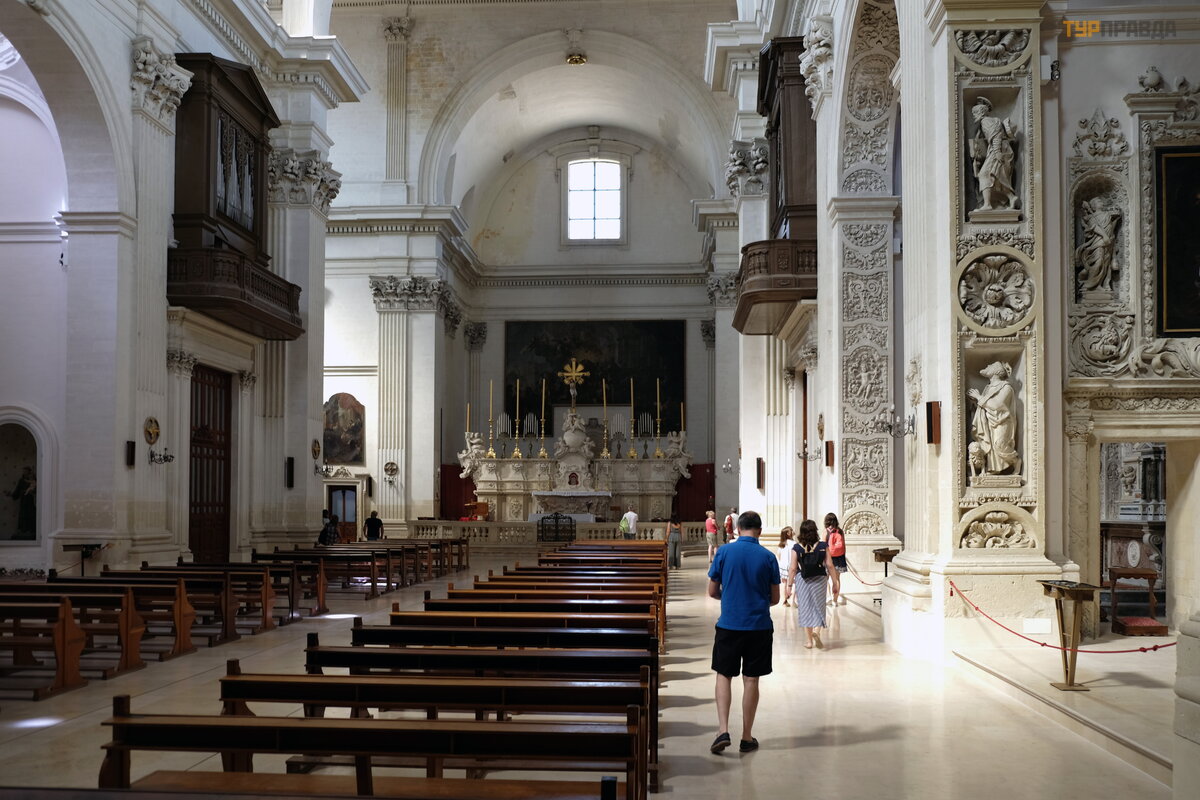
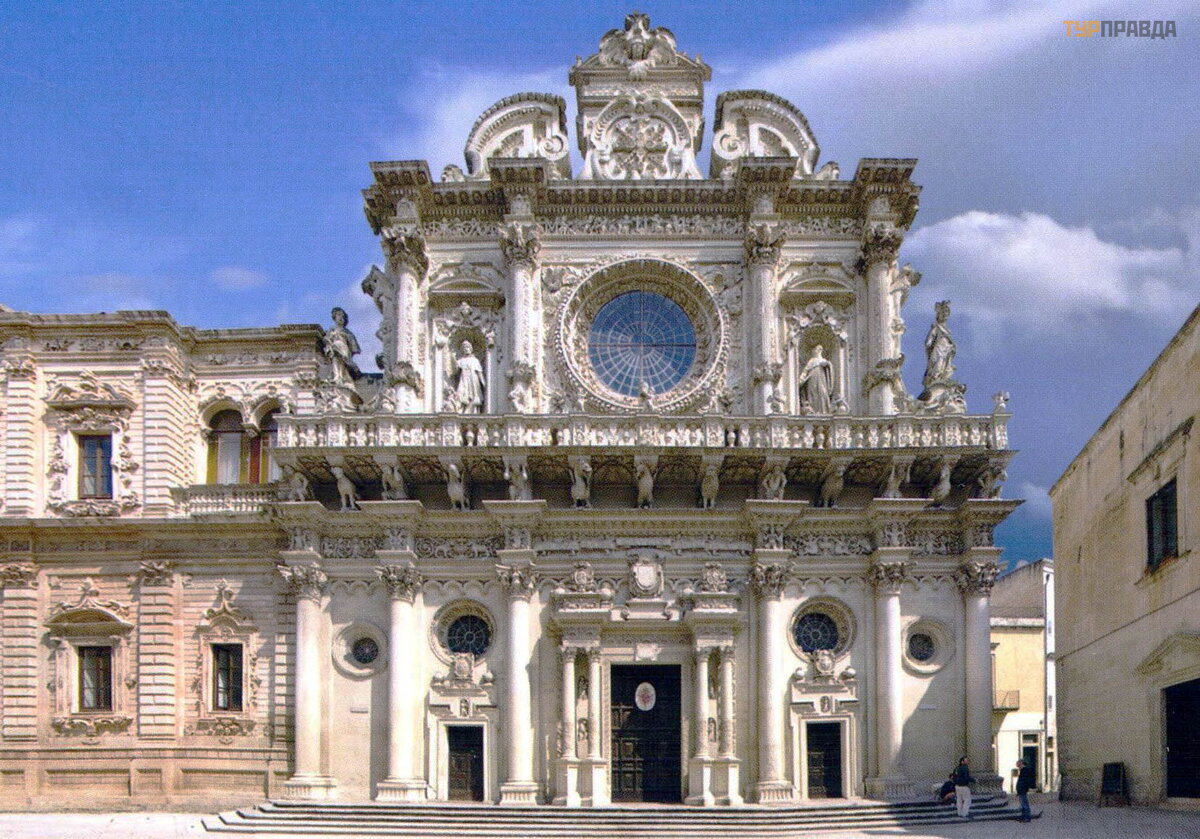
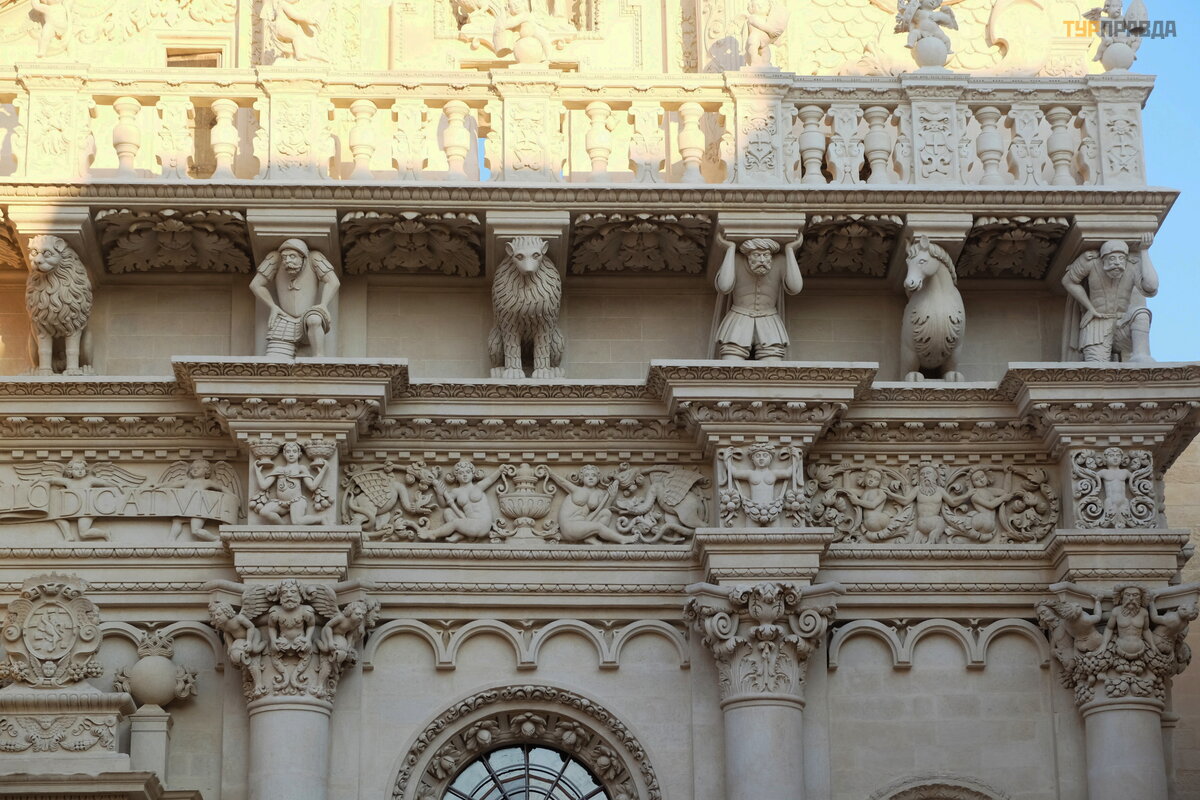
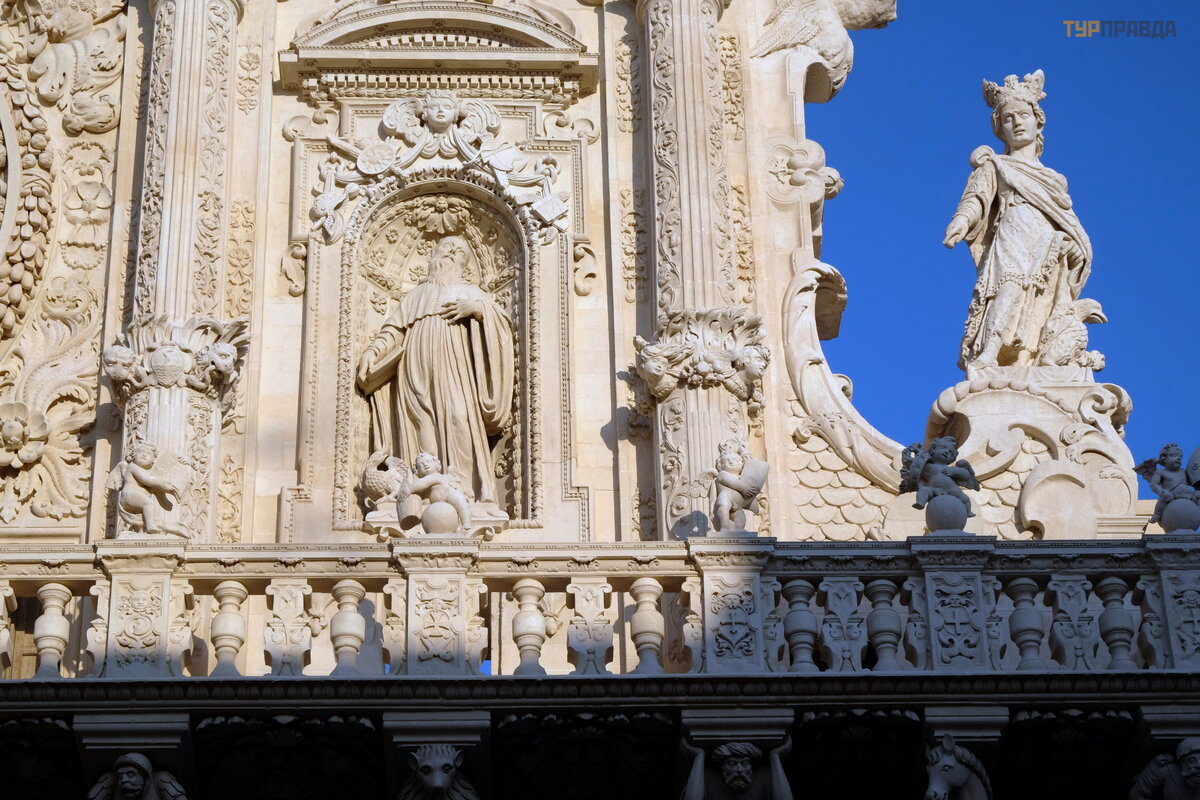
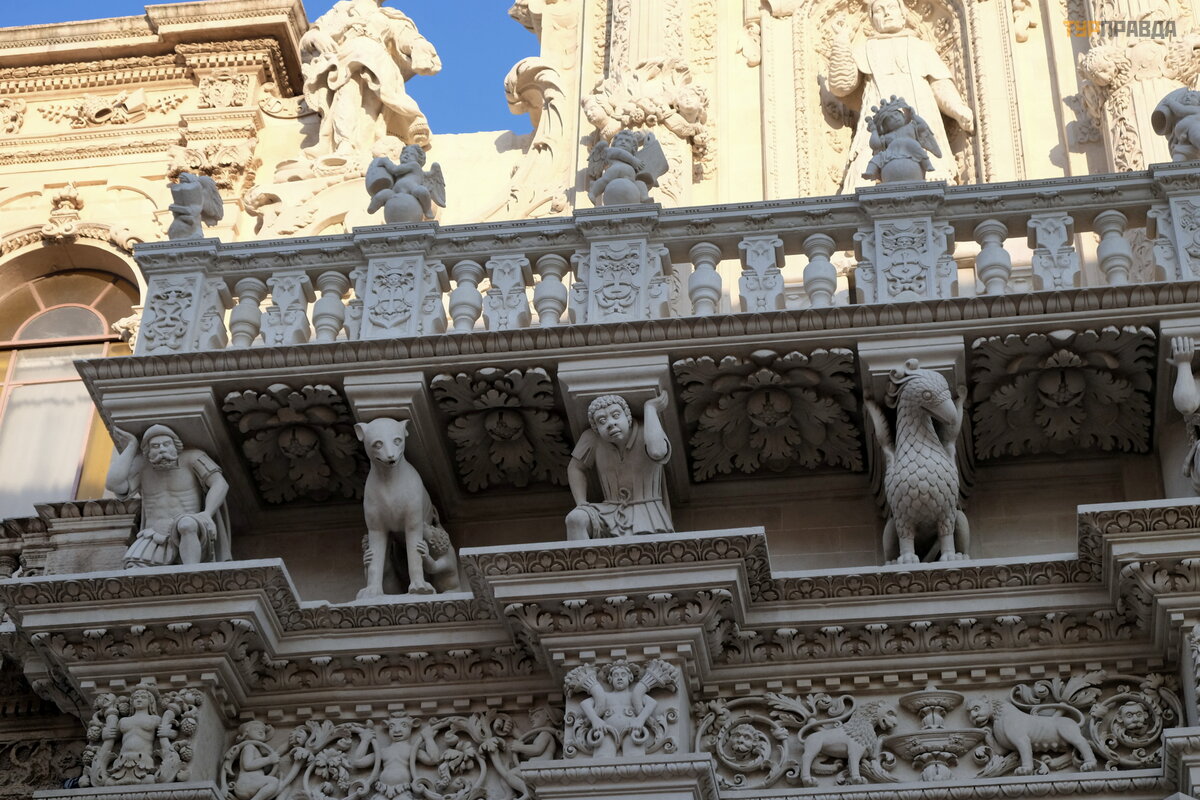
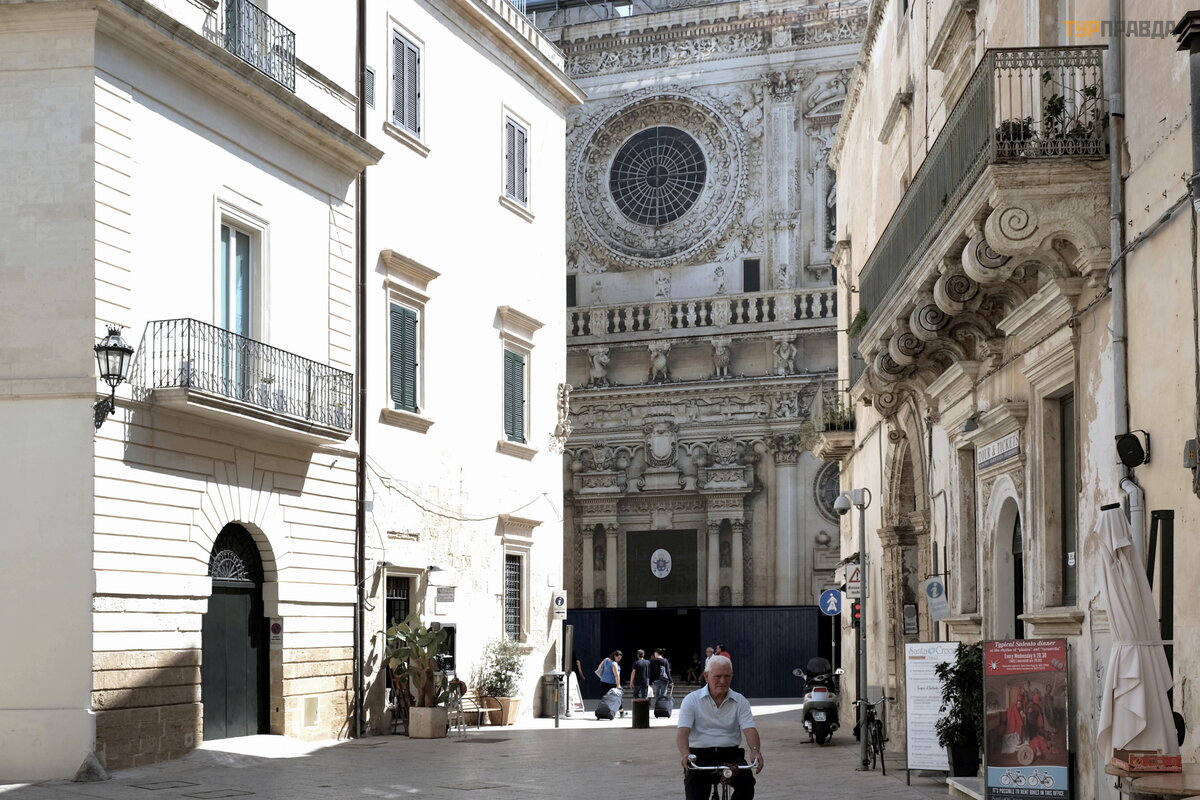
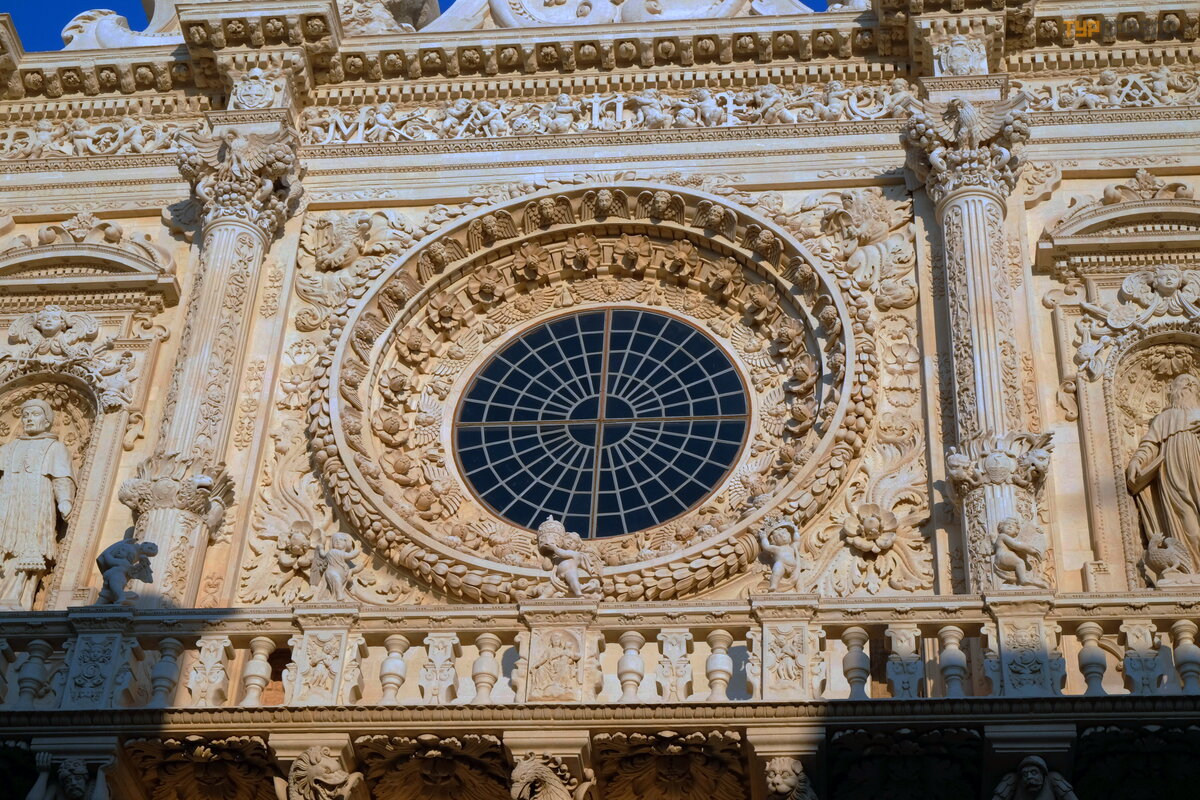
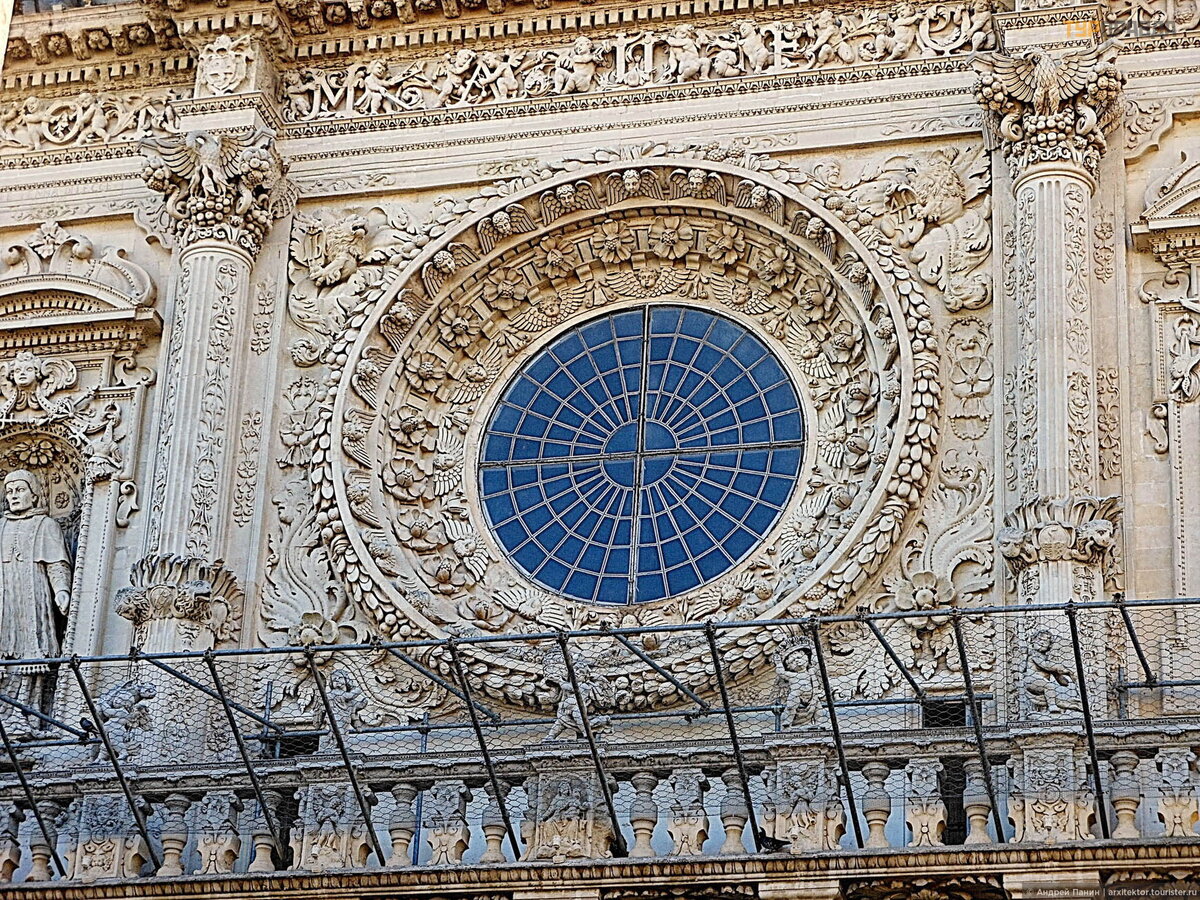
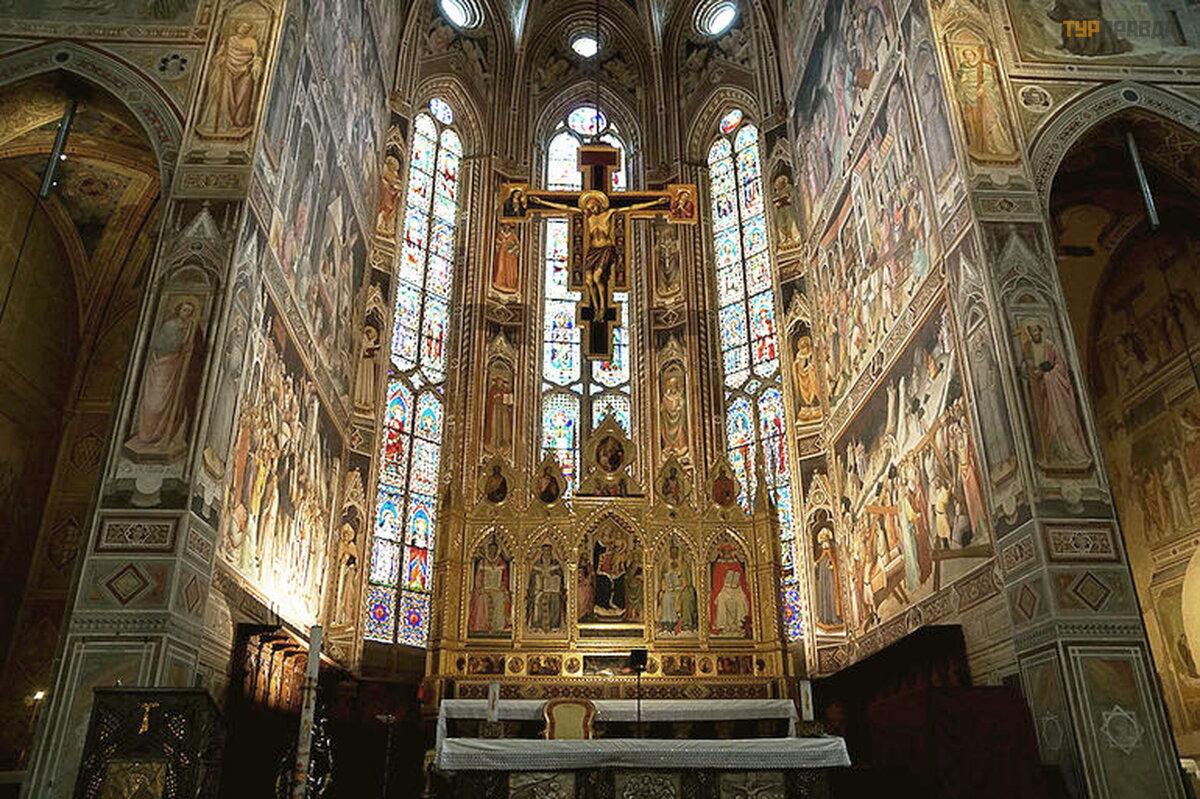
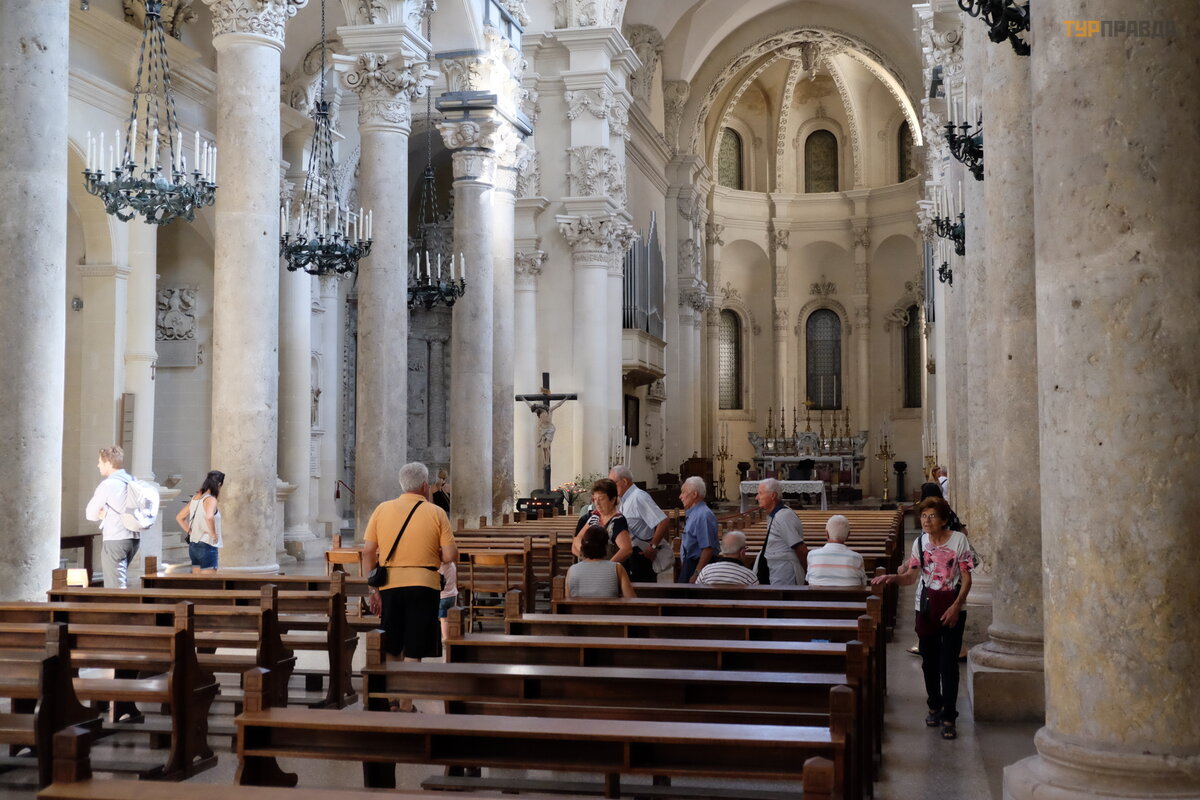
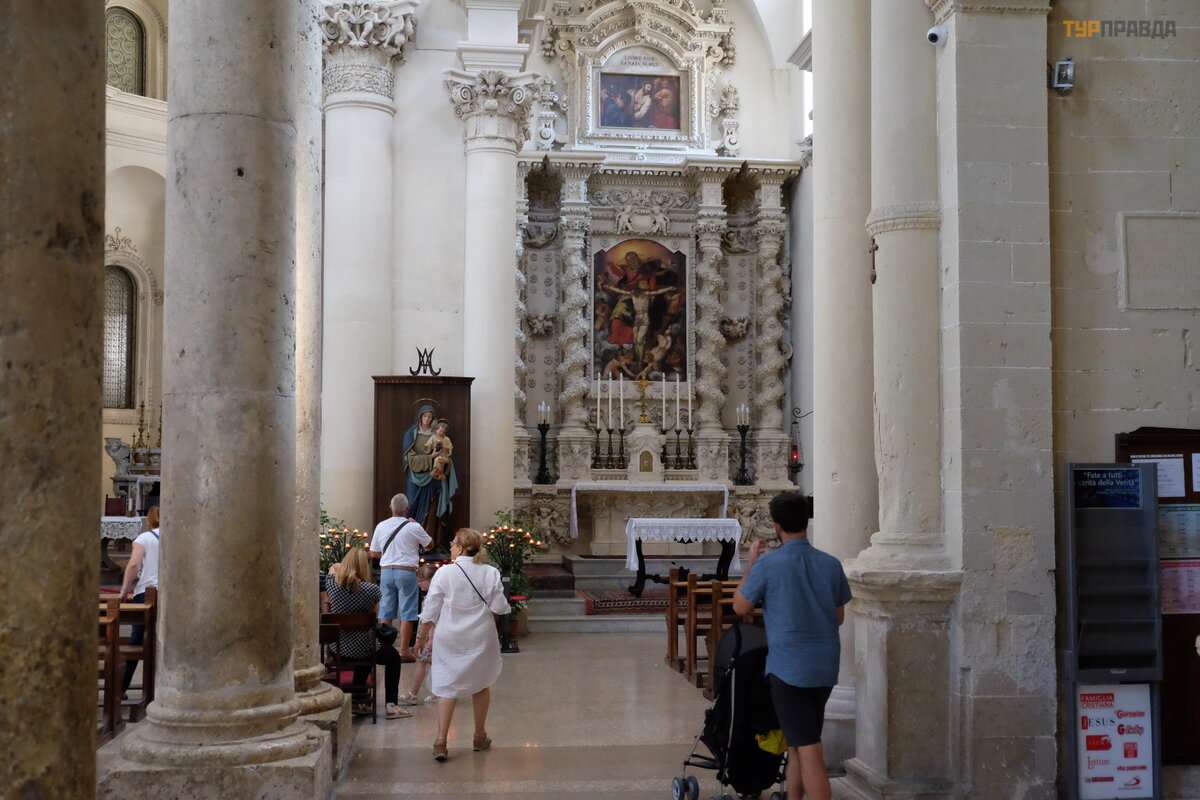
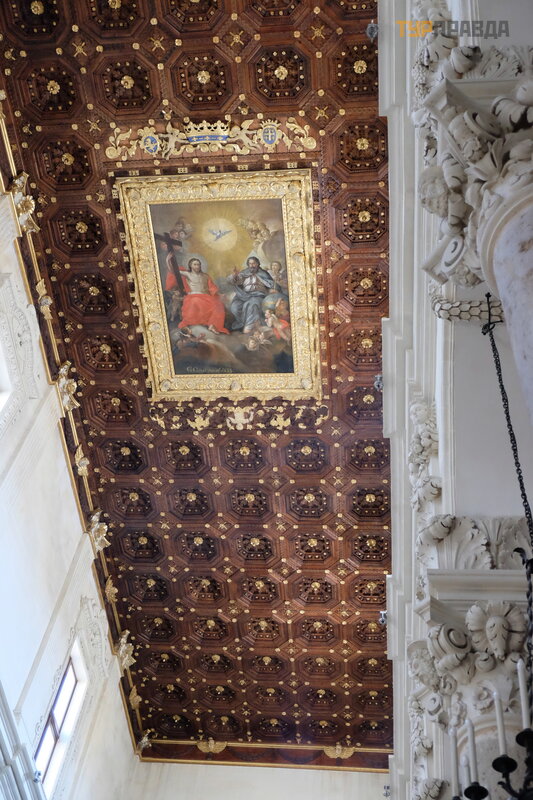
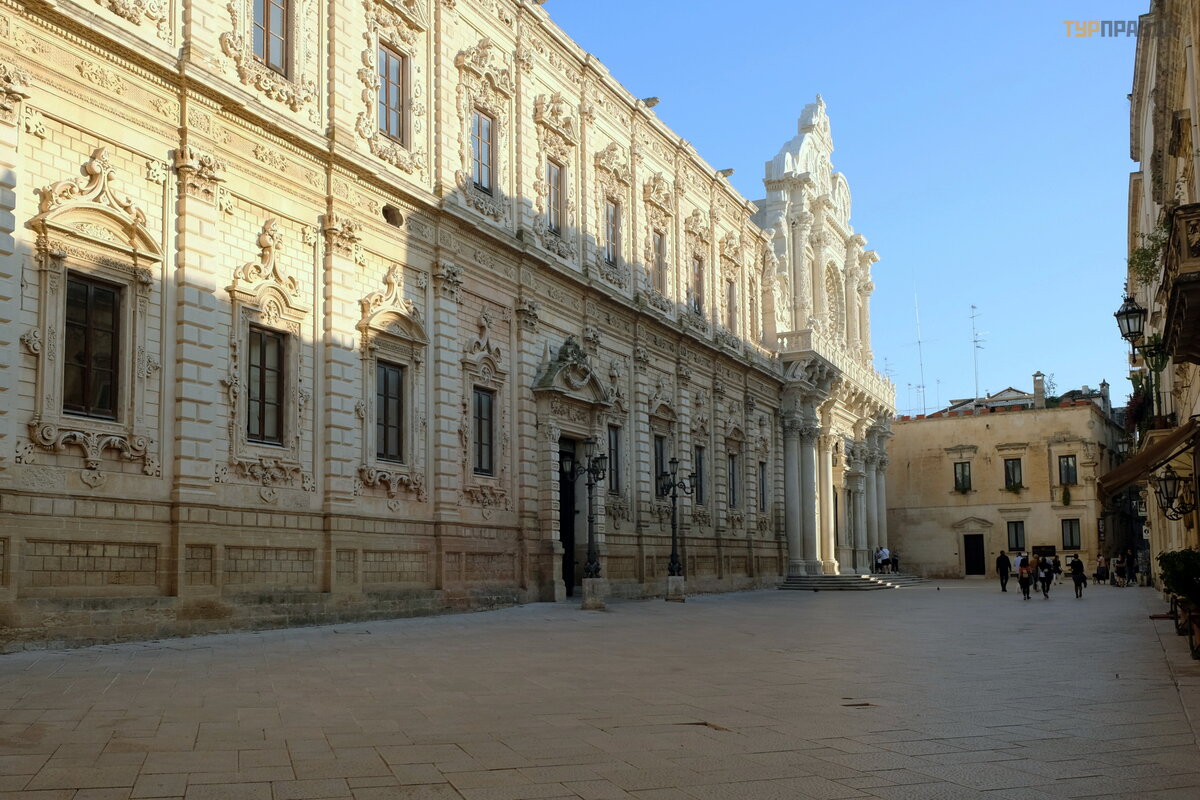
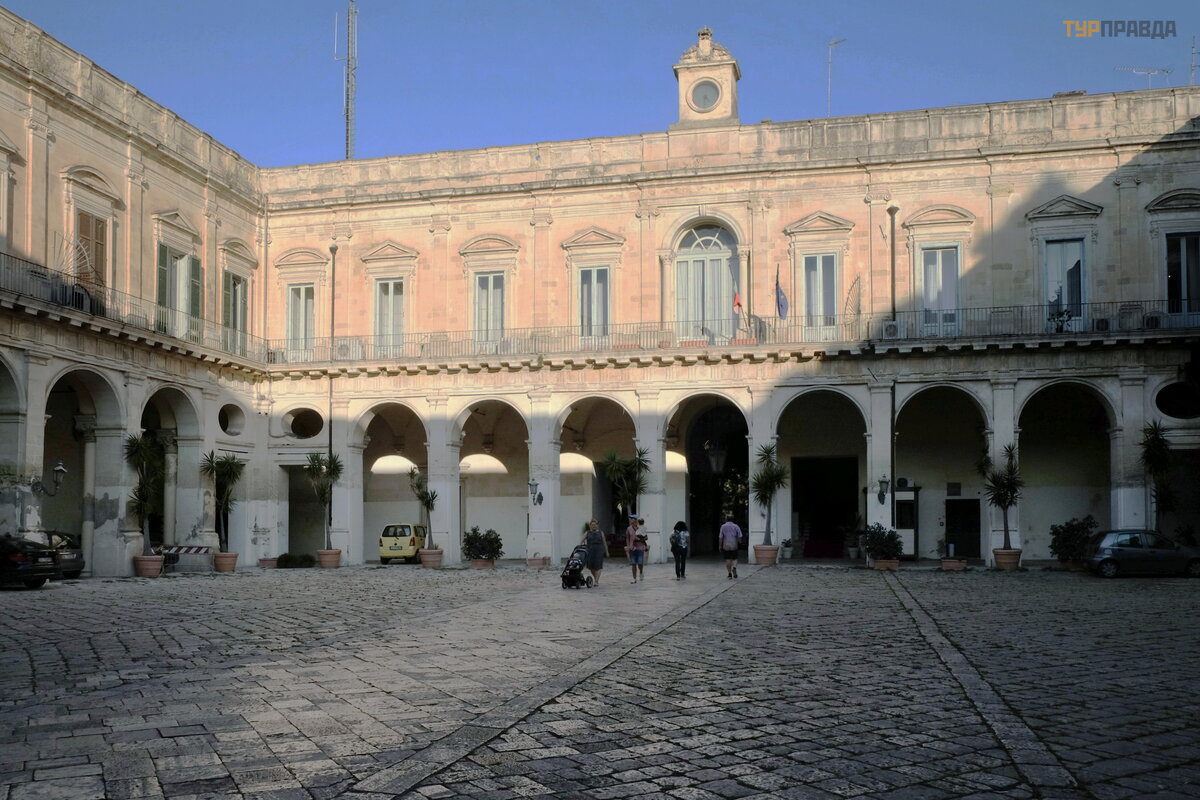
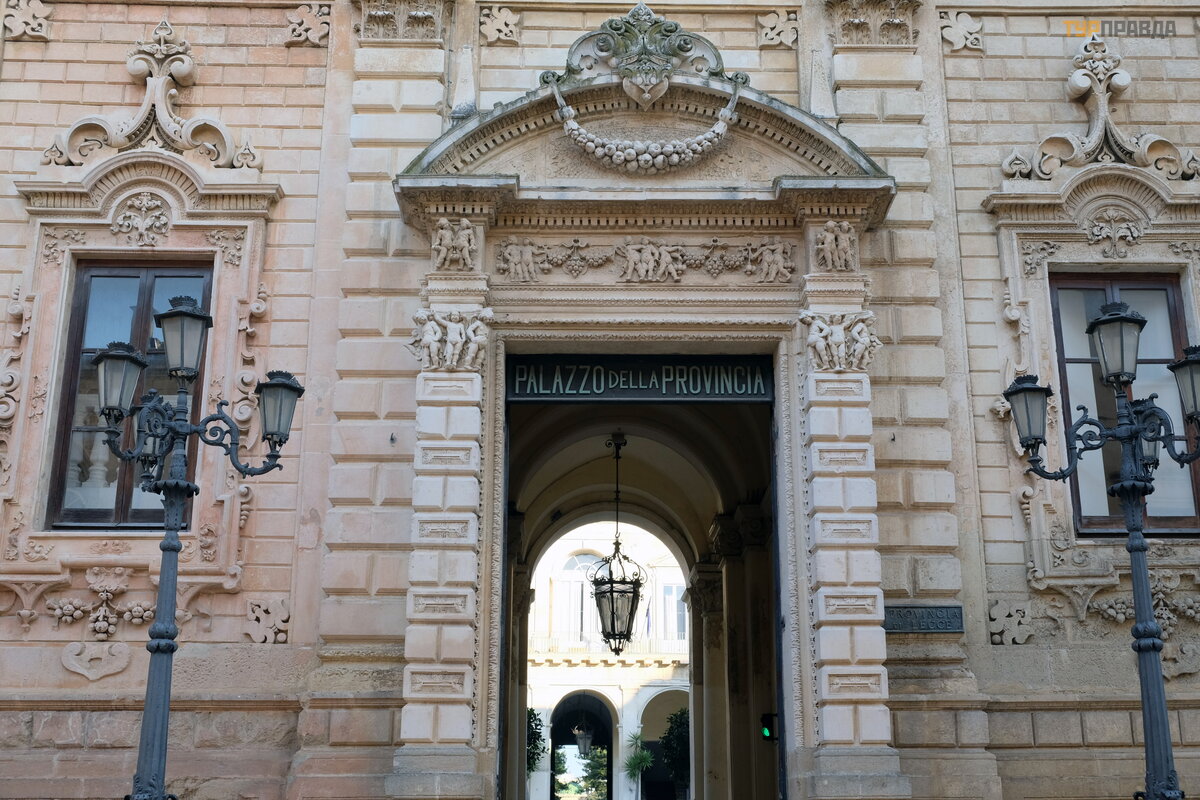
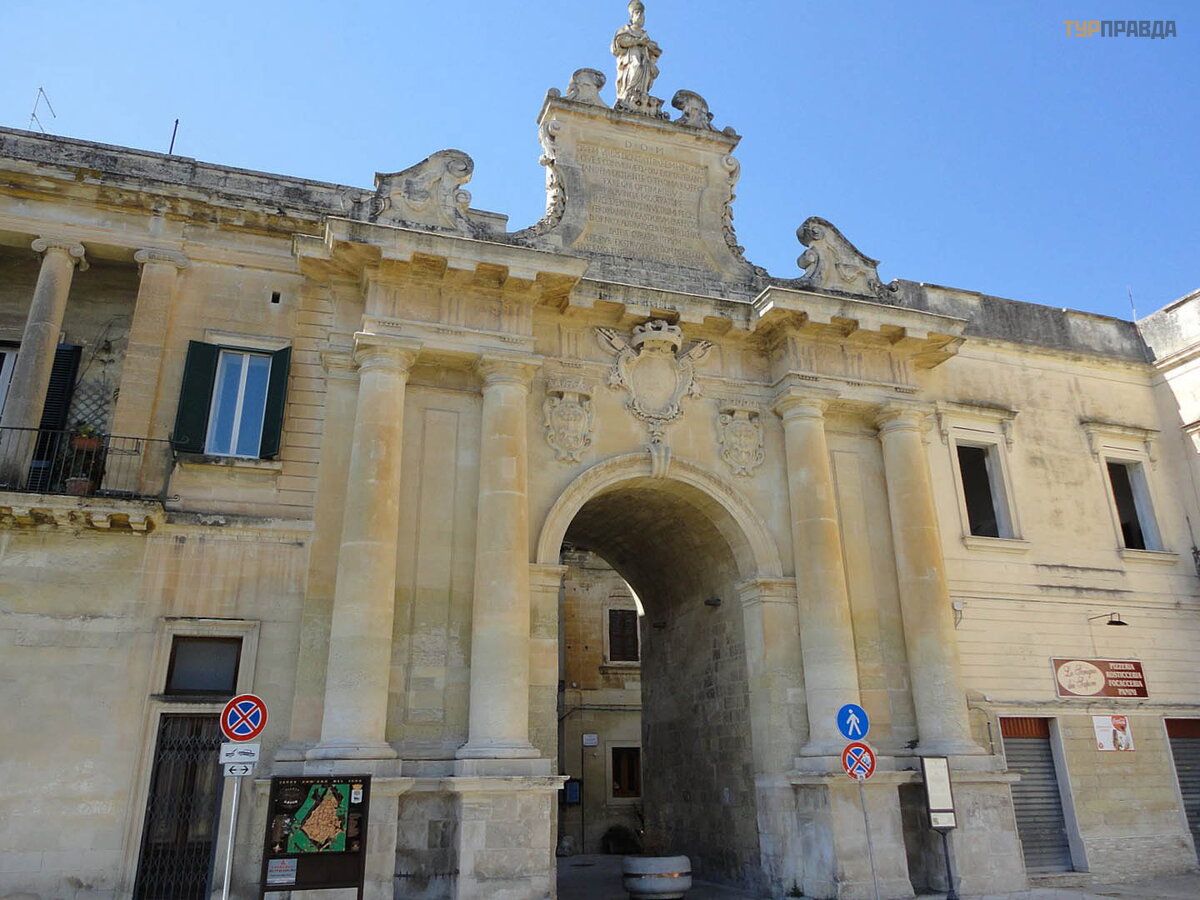














































































Like Munchausen - not a day without a feat :))))))
Как у Мюнхгаузена - ни дня без подвига :))))))
Yes, the whole trip is heroic, and only the ablution .... :)
Да, вся поездка героическая, а уж омовение.... :)
Like Munchausen - not a day without a feat :))))))
Как у Мюнхгаузена - ни дня без подвига :))))))
I forgot to state my travel budget. Housing, food, booze, local buses - 14 thousand rubles. Road Mariupol-Yalta and back - 2200 UAH. Products and booze brought with you - a little less than a thousand UAH.
Забыла озвучить бюджет поездки. Жилье, еда, бухло, местные автобусы - 14 тыс. рублей. Дорога Мариуполь-Ялта и обратно - 2200 грн. Продукты и бухло, привезенные с собой - чуть меньше тысячи грн.
I forgot to state my travel budget. Housing, food, booze, local buses - 14 thousand rubles. Road Mariupol-Yalta and back - 2200 UAH. Products and booze brought with you - a little less than a thousand UAH.
Забыла озвучить бюджет поездки. Жилье, еда, бухло, местные автобусы - 14 тыс. рублей. Дорога Мариуполь-Ялта и обратно - 2200 грн. Продукты и бухло, привезенные с собой - чуть меньше тысячи грн.